Our June 2016 Garden

Out comes the camera on this moist June day! Moist did I say? It's that pesky Southern California June Gloom. Yes, it is a real thing!
We must say one thing first.... The Adams, Duda's and Greg all came to Paul's rescue after his heart attack! Unable to work the garden our family came together and kept it going for several weeks until Paul could get around and contenttain the garden again!
Greg came every Wednesday and Saturday like clockwork and weeded and watered and learned about growing veggies. It's wonderful to have a great family for support!
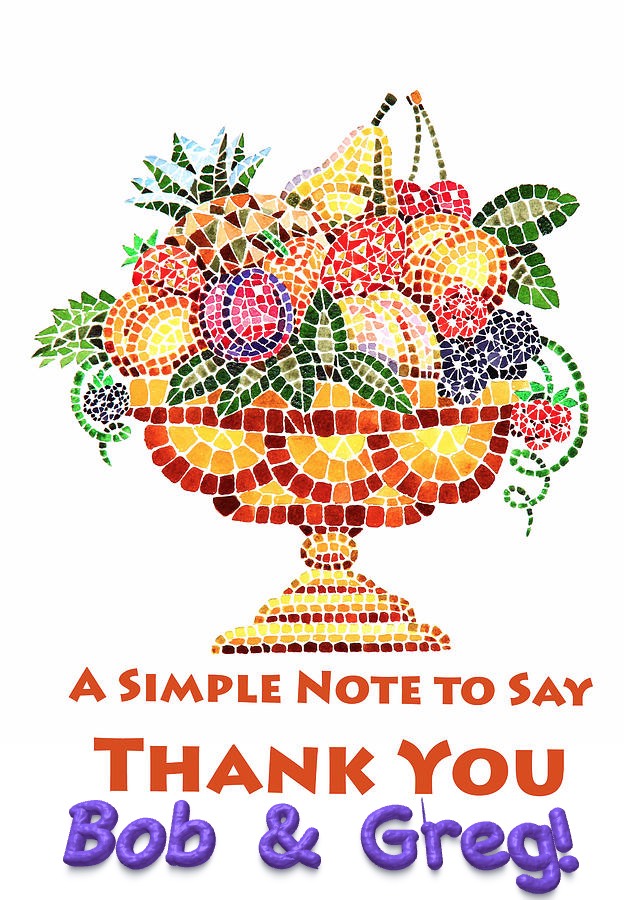
The Tour Begins

Did You Know? - June Gloom is a southern California term for a weather pattern that results in cloudy, overcast skies with cool temperatures during the late spring and early summer. While it is most common in the month of June, it can occur in surrounding months, giving rise to other colloquialisms, such as "May Gray", "No Sky July", and, rarely, "Fogust". Low-altitude stratus clouds form over the cool water of the California Current, and spread overnight into the coastal regions of Southern California.
The overcast skies often are accompanied by fog and drizzle, though usually not rain. June Gloom usually clears up between mid-morning and early afternoon, depending on the strength of the marine layer, and gives way to sunny skies. On a strong June Gloom day, the clouds and fog may extend inland to the valleys and Inland Empire and may persist into the mid-afternoon or evening.
A combination of atmospheric and oceanic conditions must be just right in order for June Gloom to form, and these conditions usually align only around May and June of each year. These include the marine layer effect common to the West Coast, an atmospheric inversion caused by subsidence of high-pressure air from the subtropical ridge, and sufficiently cool ocean water off the coast. The June Gloom pattern is also enhanced by the Catalina eddy local to southern California.

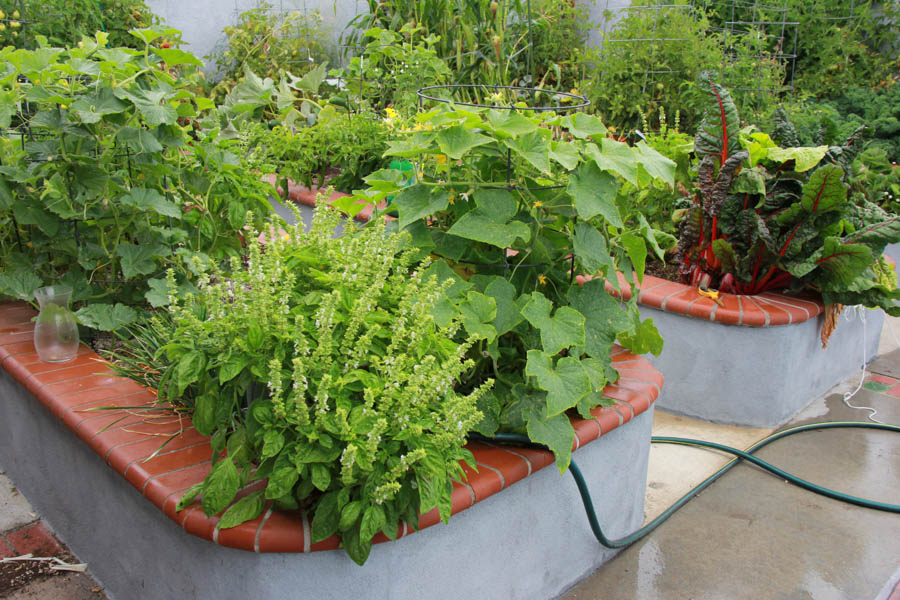
We had some rain this morning... 1/8th of an inch maybe!
The basil is doing it's job of bringing in bees and the cucumber is busy providing us fresh salads!
Look Below... See the carrots hiding behind the cantelope?
-
If you dug a hole to the Earth's center and dropped a Baby Carrot in it, it'd take 42 minutes to get to the bottom.
-
Carrots have one of the highest content of beta carotene (vitamin A) of all vegetables.
-
You get between 175,000 and 450,000 seeds in a pound - a teaspoon can hold approximately 2000!
-
The Americans know the wild carrot as Queen Anne's Lace, wild carrot, rattlesnake weed & American carrot.
- Holtville, California dubs itself "The Carrot Capital of the World." with an Annual Festival, now in its 60th year.
- The Anglo-Saxons included carrots as an ingredient in a medicinal drink against the devil and insanity.
-
The Greek foot soldiers who hid in the Trojan Horse were said to have consumed ample quantities of raw carrots to inactivate their bowels.
- The Ancient Greeks called the plant Philtron or Bird's Nest.
- In August 2005 Ozlem Aydin wrote a thesis on the mathematical analysis of peeling of carrots, to the graduate school of natural and applied sciences of middle east technical university as part of the requirement for a Masters Degree in Food Engineering.
- Fuel for Cars? Scientists now believe that bio fuels will be the answer to our energy needs when the oil runs out. One such fuel, perhaps within 10 years, will be carrots - it would take approximately 6000 carrots to drive one mile.
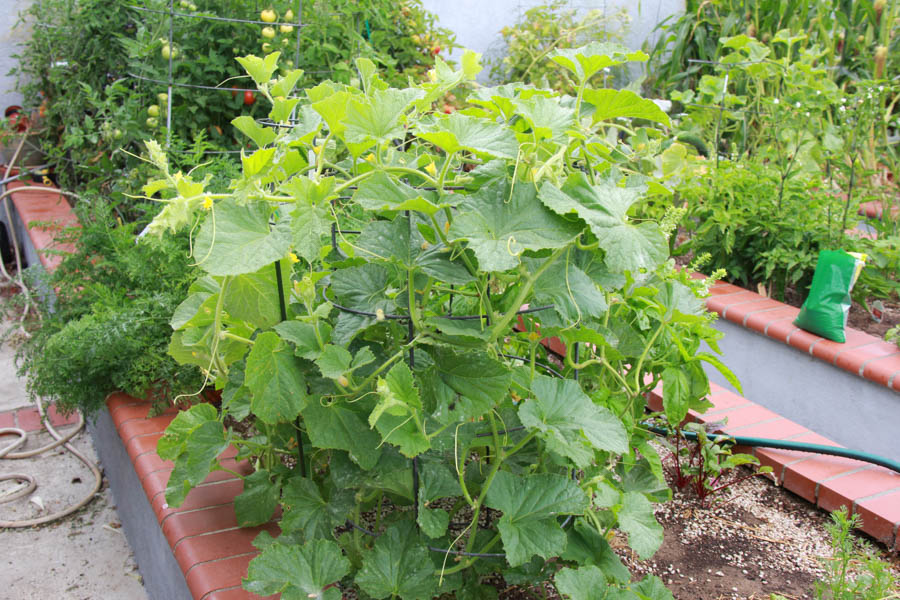
The cantaloupe is doing quite well...
Some of the blossoms better drop off or we will be in trouble
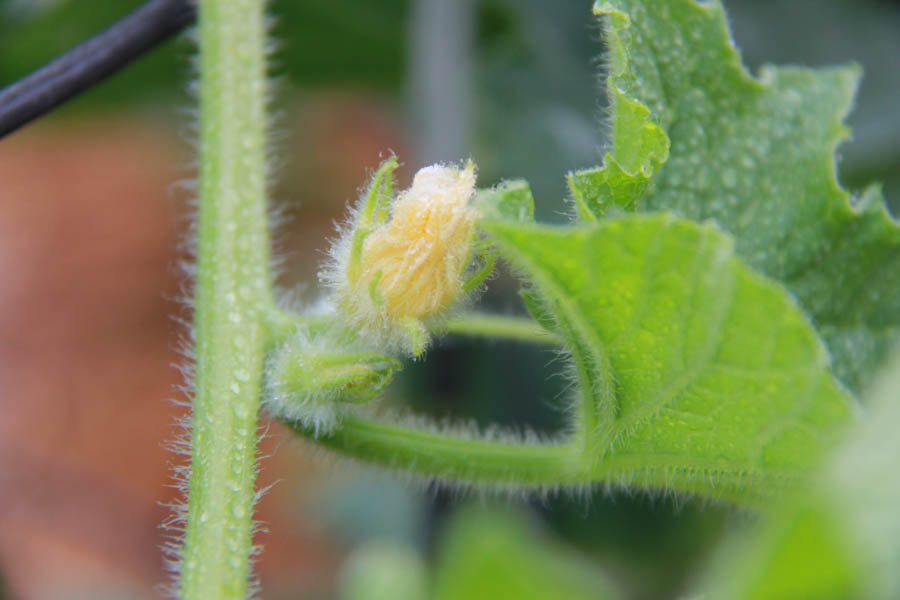
A baby cantaloupe being born
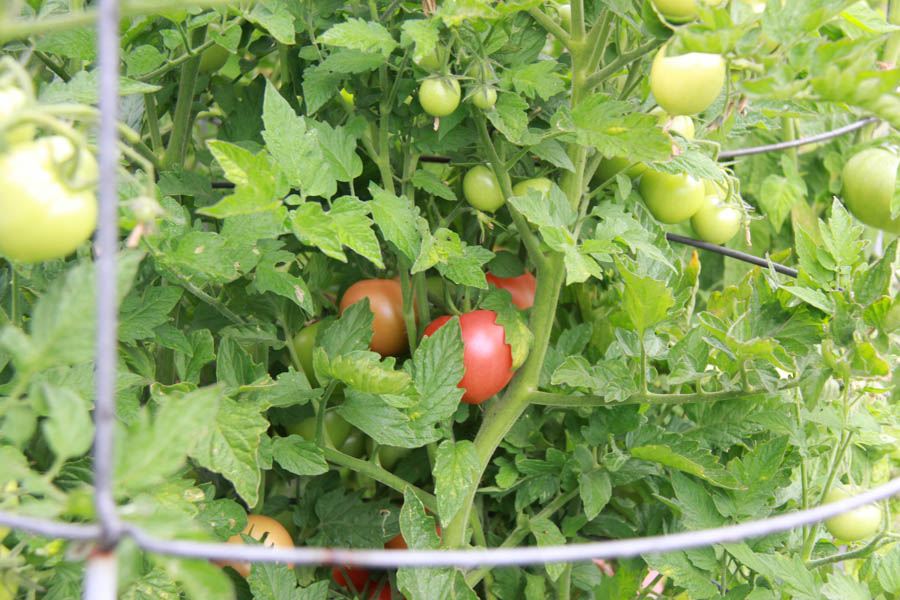
The 'maters' are doing just fine! We have been picking them for about three weeks!
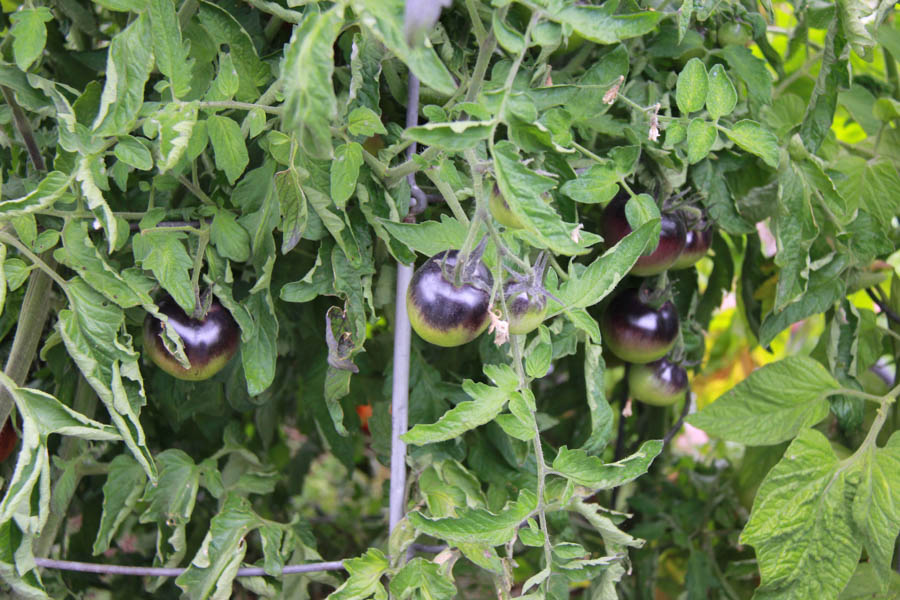
Yes... These are tomatoes... Black Krims

We thought the "Old German" was next door (Sorry Del!)
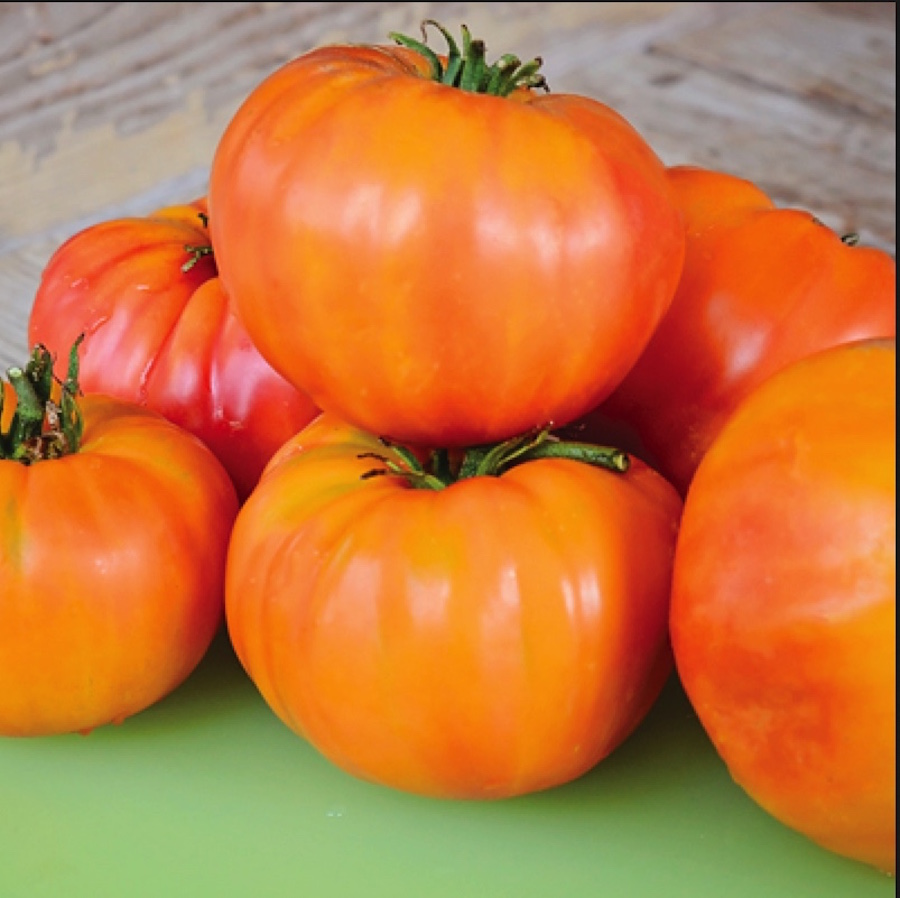
Up close... They are beautiful!
Did You Know? - The Old German multicolor beefsteak tomato dates back to the mid 1800's in the Shenandoah Valley of Virginia, a Mennonite heirloom. The Mennonites take great pride in preserving their heritage, faith, and way of life; they are responsible for cultivating many excellent heirloom vegetable varieties. Old German was commercially produced beginning in 1985 by Southern Exposure Seed Exchange.
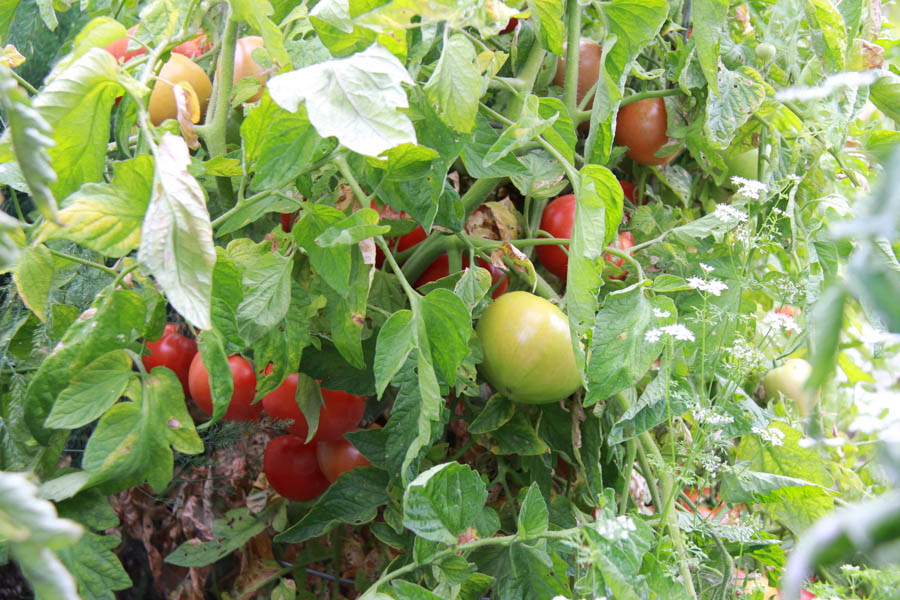
One must reach deep inside to get to the early ripe tomatoes
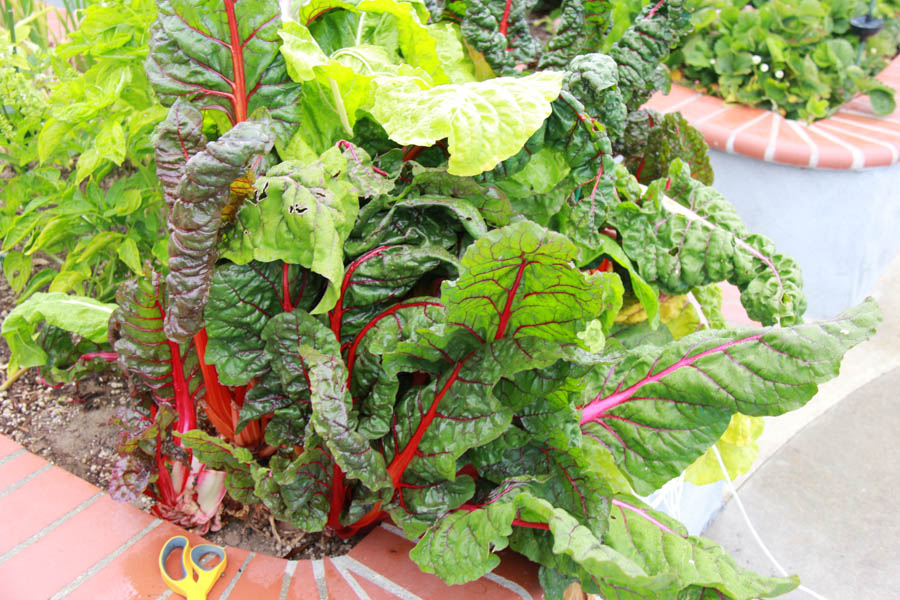
The Swiss Chard was excellent. We have given some to friends and cooked the recontentder. It is a delicious side with almost anything!
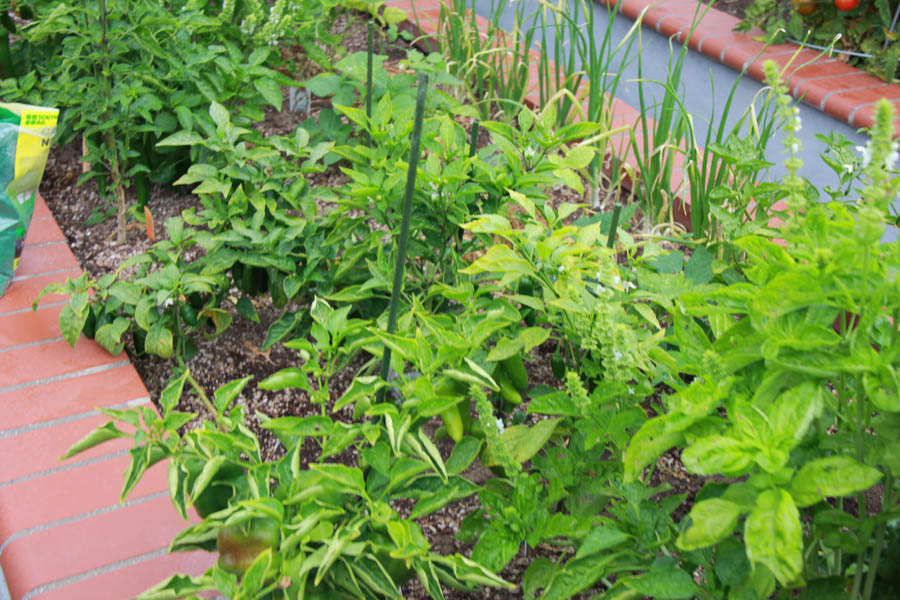
The peppers are doing just fine!
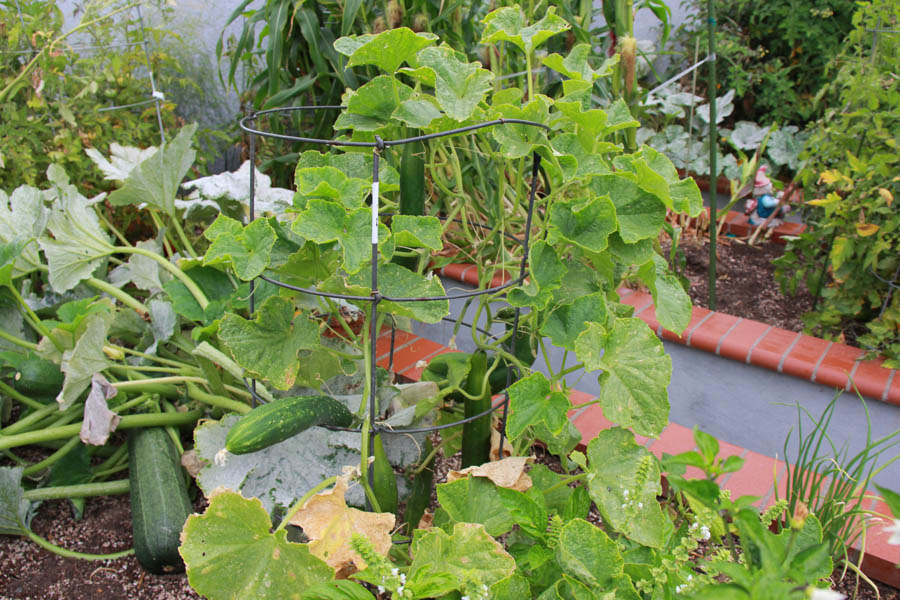
The Japanese Cucumbers are also doing well... The Zucchini are
done for this batch... we will replant soon
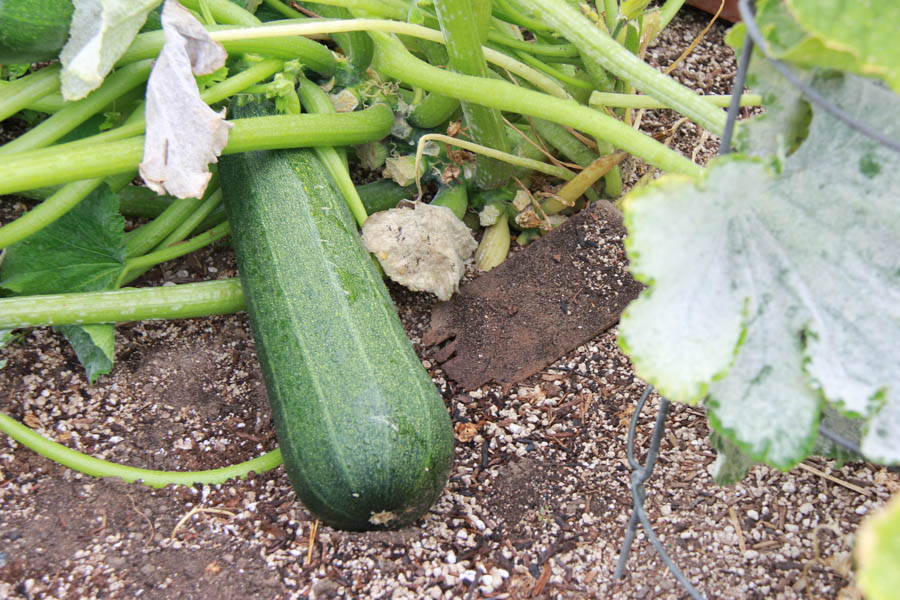
Too big to eat but interesting to look at!
The powdery mildew got to the zucchini


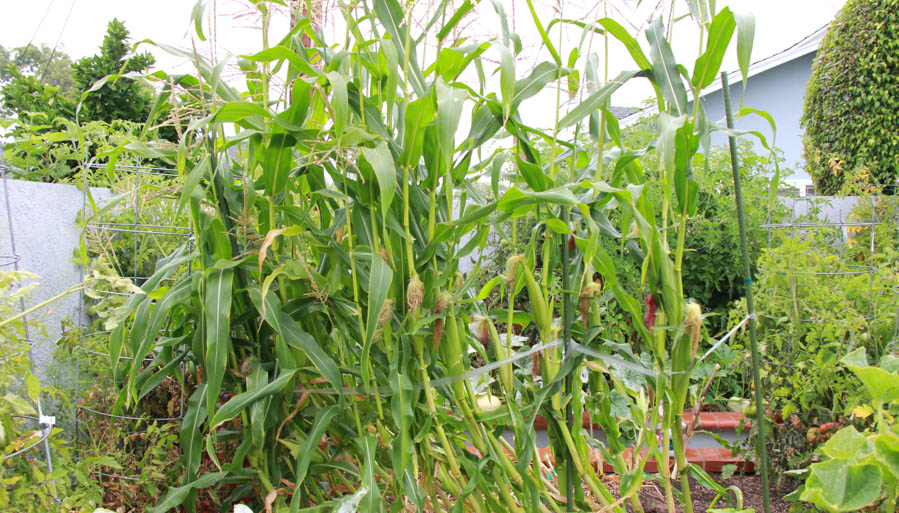
We have had fresh Corn On The Cob for the past two weeks!
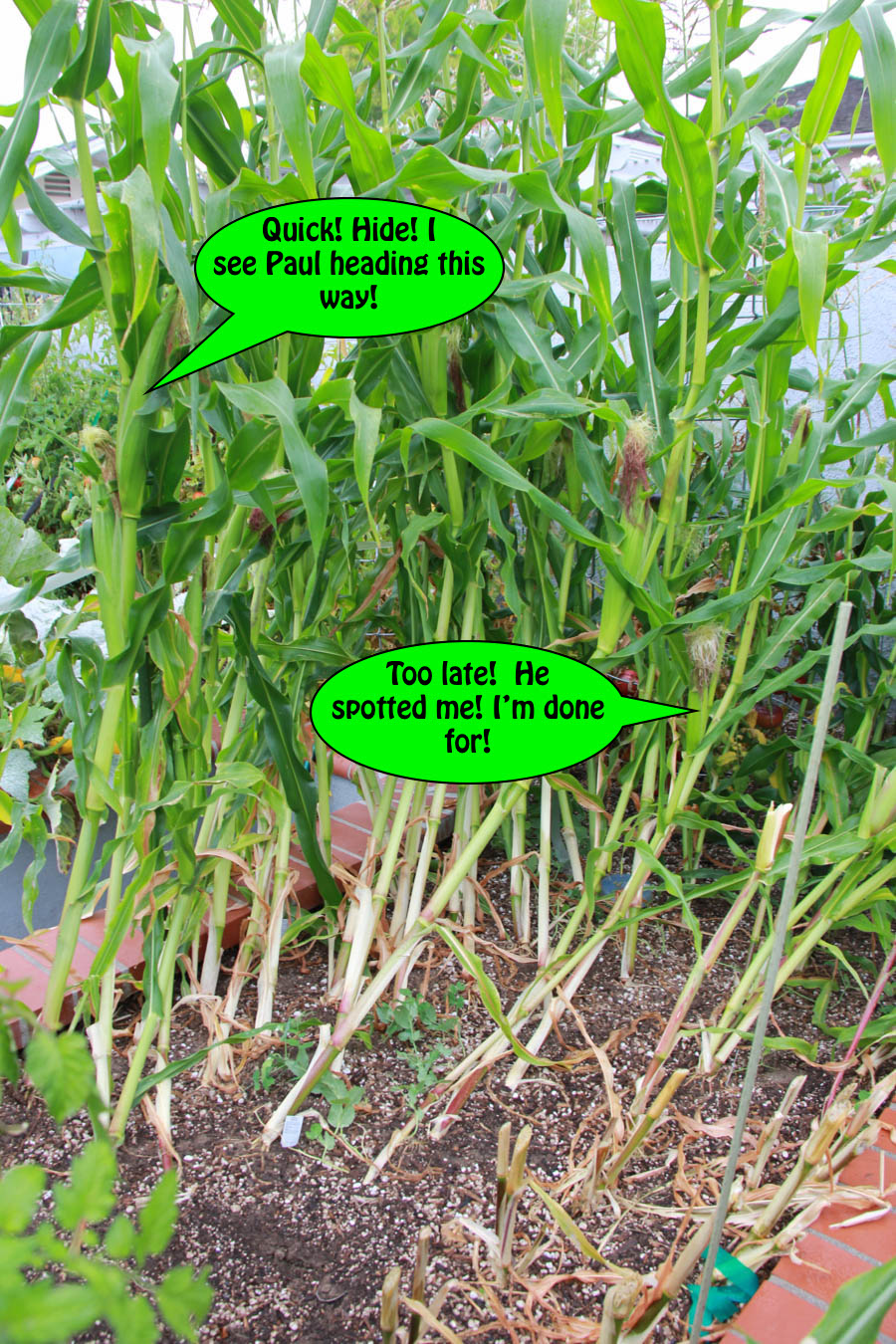
We pull the plant as soon as it delivers so we can plant some new ones
Did You Know? - Corn on the cob (known regionally as "pole corn", "cornstick", "sweet pole", "butter-pop" or "long maize") is a culinary term used for a cooked ear of freshly picked maize from a cultivar of sweet corn. Sweet corn is the most common variety of maize eaten directly off the cob.
The ear is picked while the endosperm is in the "milk stage" so that the kernels are still tender. Ears of corn are steamed or boiled, usually without their green husks, or roasted with them. The husk leaves are in any case removed before serving.
Corn on the cob is normally eaten while still warm. It is boiled or grilled. It is then often seasoned with salt and buttered before serving. Some diners use specialized skewers, thrust into the ends of the cob, to hold the ear while eating without touching the hot and sticky kernels.
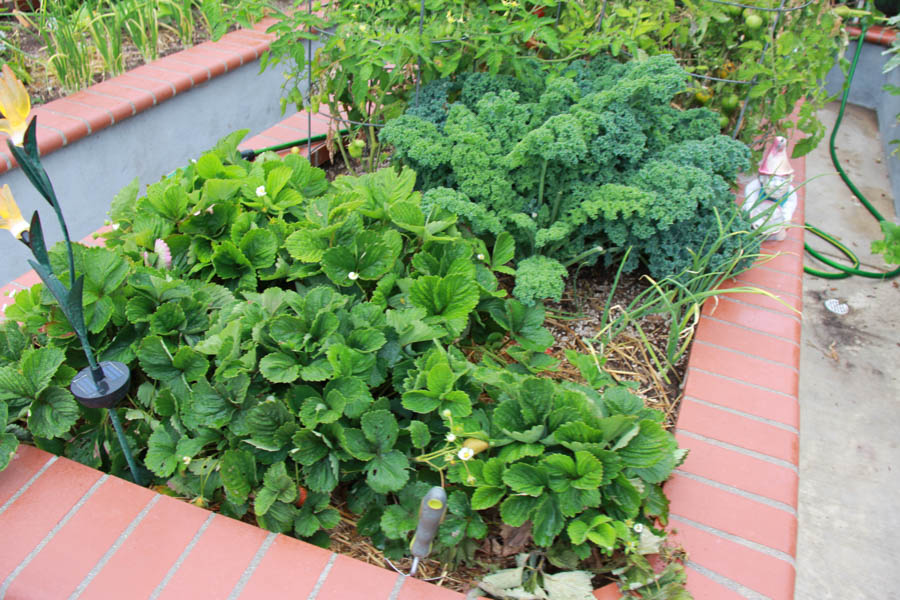
Strawberries... Yum Yum Yum
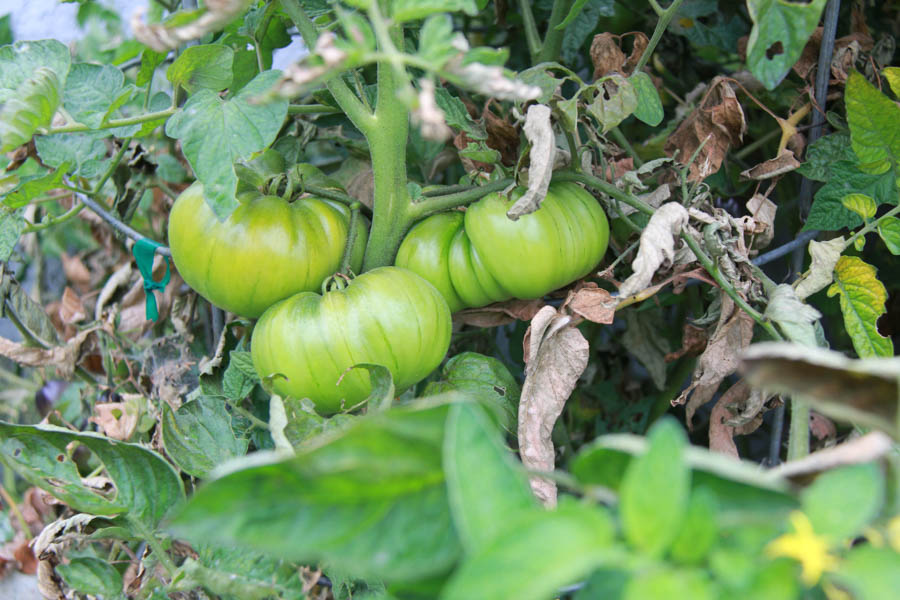
"Just wait... I will be ready in three weeks!"
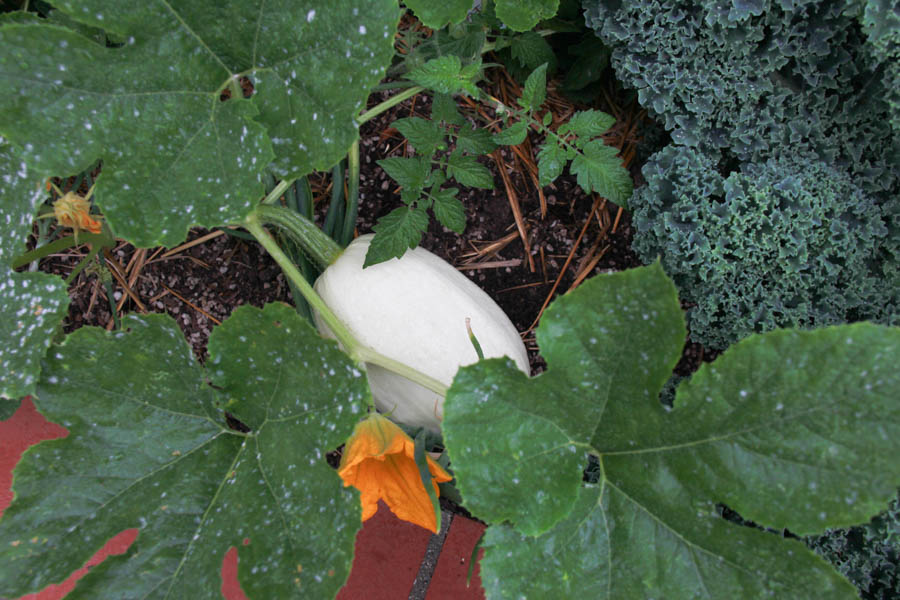
Spaghetti Squash!
The Curley Kale is used for making kale chips
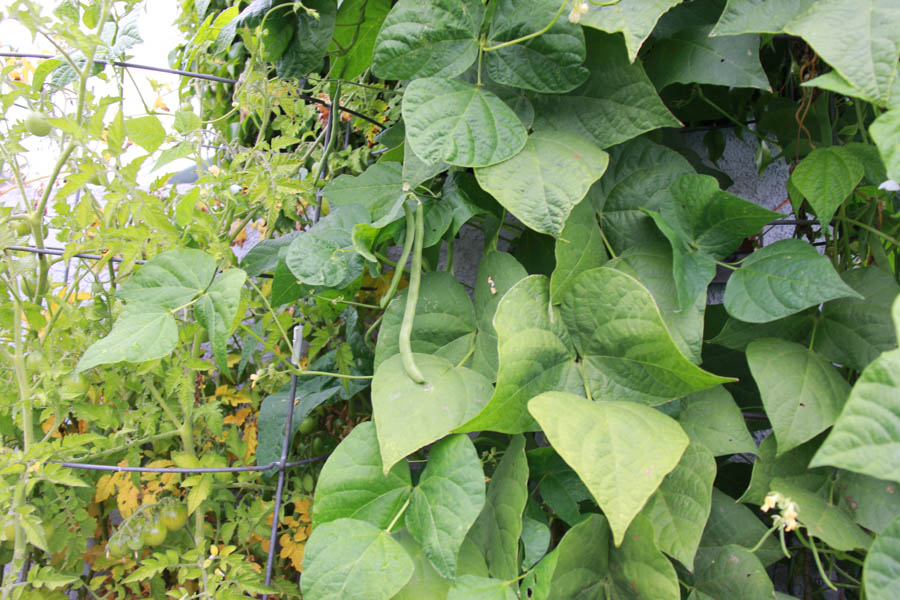
The string beans are so good when very fresh and small!"

Spoon tomatoes
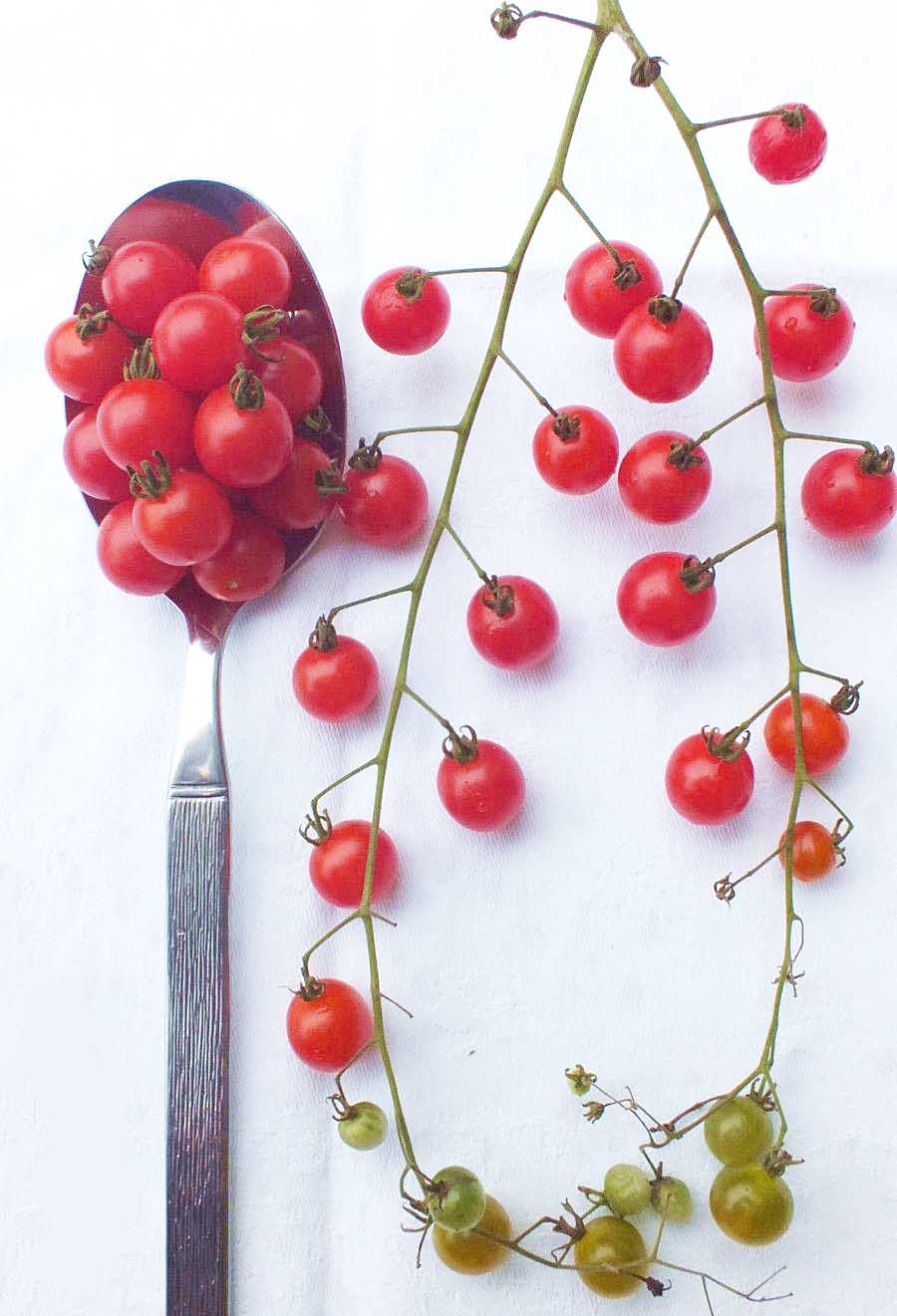
They are indeed tiny little guys but quite flavorable!
Did You Know? - The Spoon Tomato are related to the ancestor of all tomatoes. The name was coined by the Park Seed Company years ago when they offered the seed for a short time. Spoon Tomatoes produce big, wispy, vigorous, sprawling plants (likes warmer temperatures to start) that yields a forest of red, pea-sized fruits that are swee/tart with a bold, refreshing taste. This is a fun tomato variety to share with other tomato enthusiasts and a great item for your garden as a snacking tomato, garnish in culinary creations, or as a salad tomato. A terrific novelty tomato.
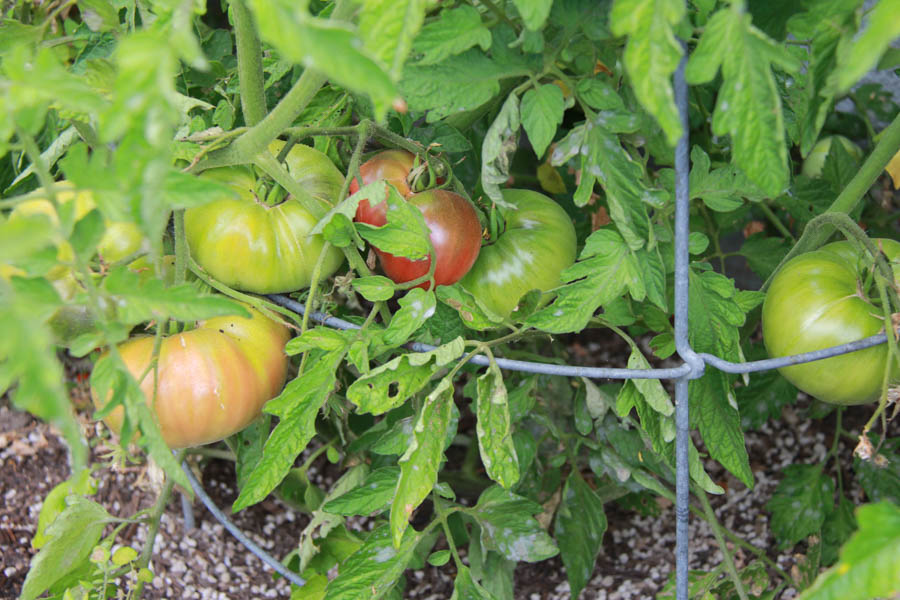
Red and Green... Christmas?
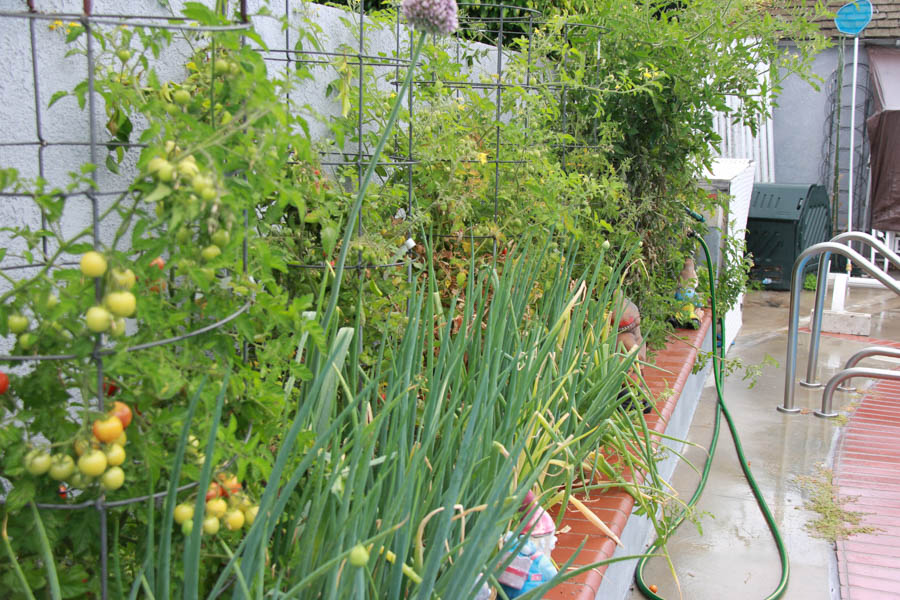
Our east wall planter is loaded!
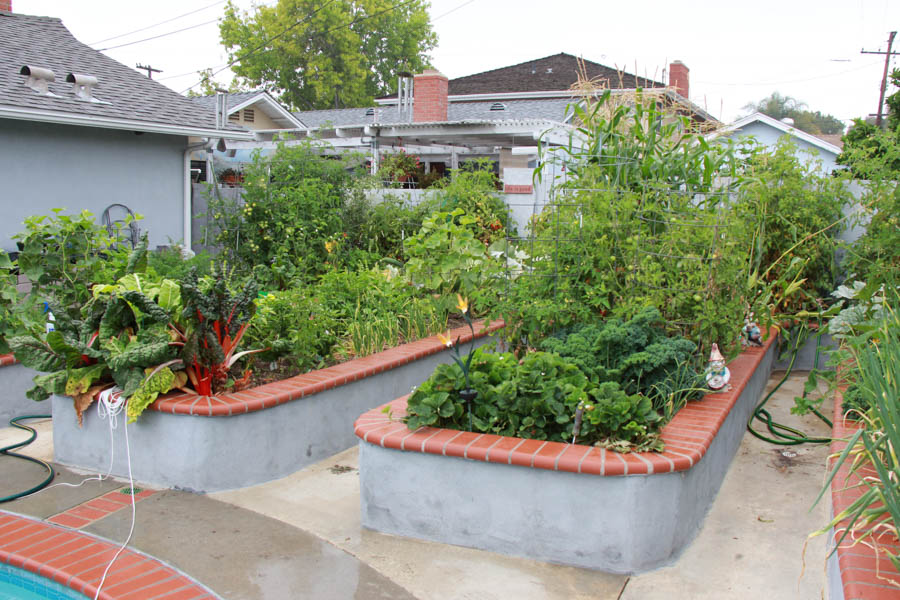
The planters are all full but easy to take care of!
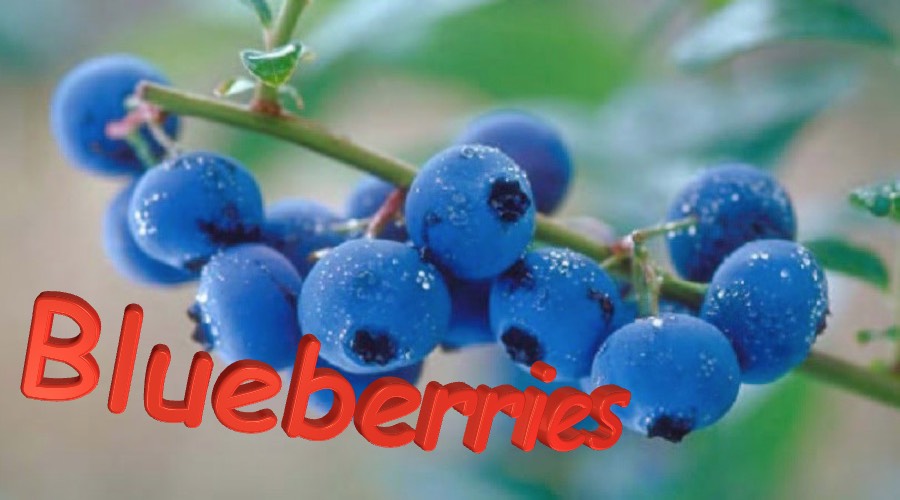
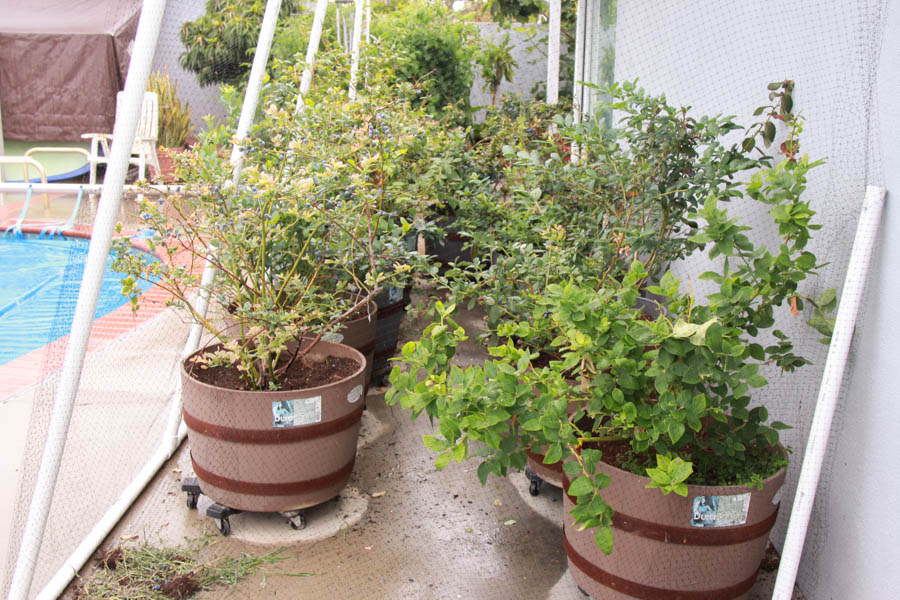
The cage was successful this year... No birdies go to the blueberries

They are nice and plump
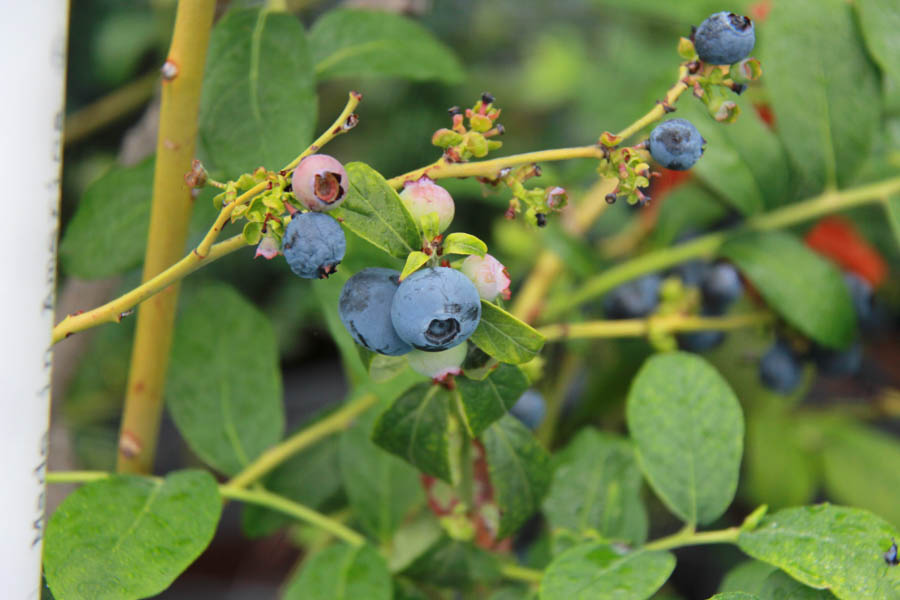
They look like they want to be in a bowl of cereal with sliced bananas!

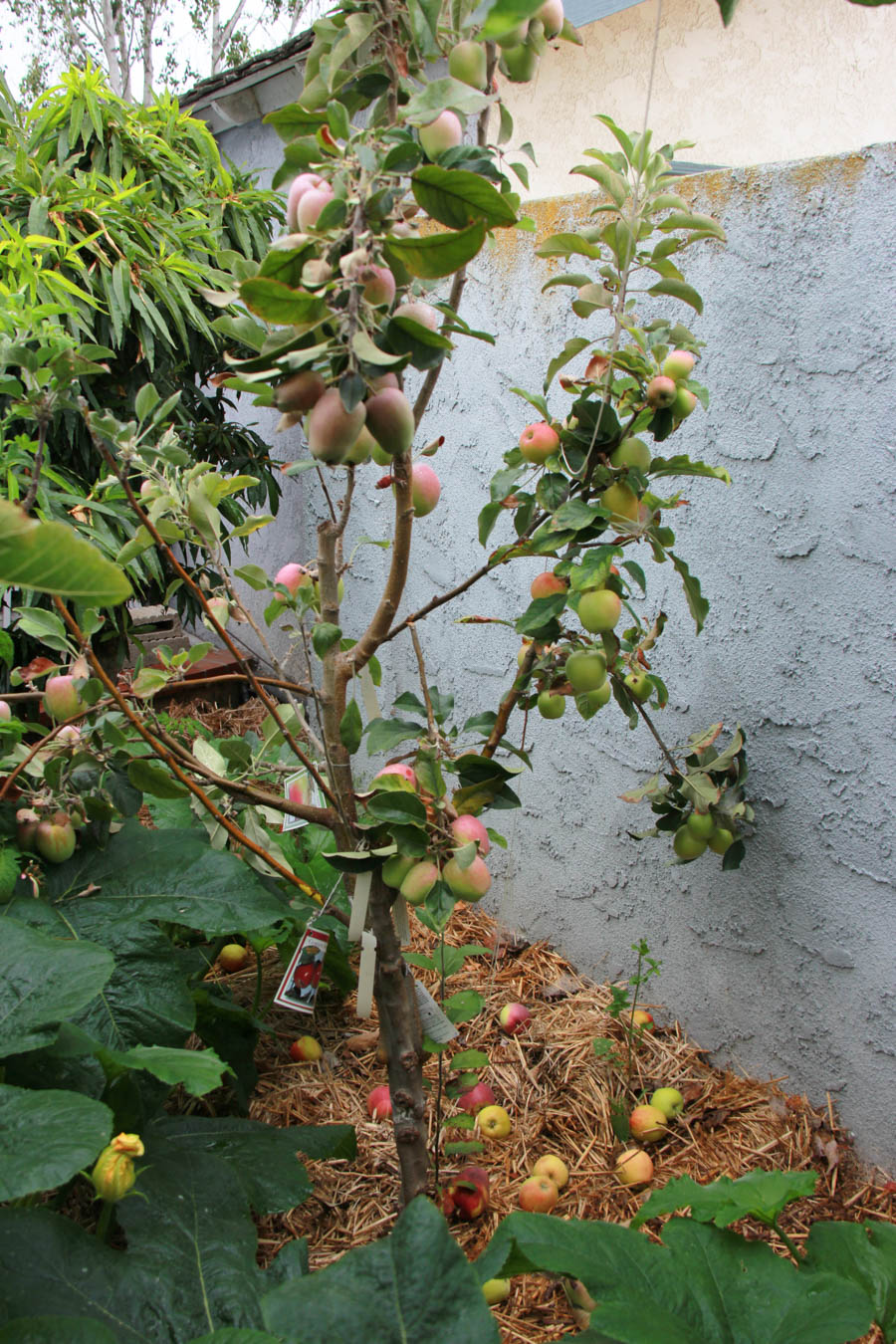
We must go apple picking as some are beginning to drop off!
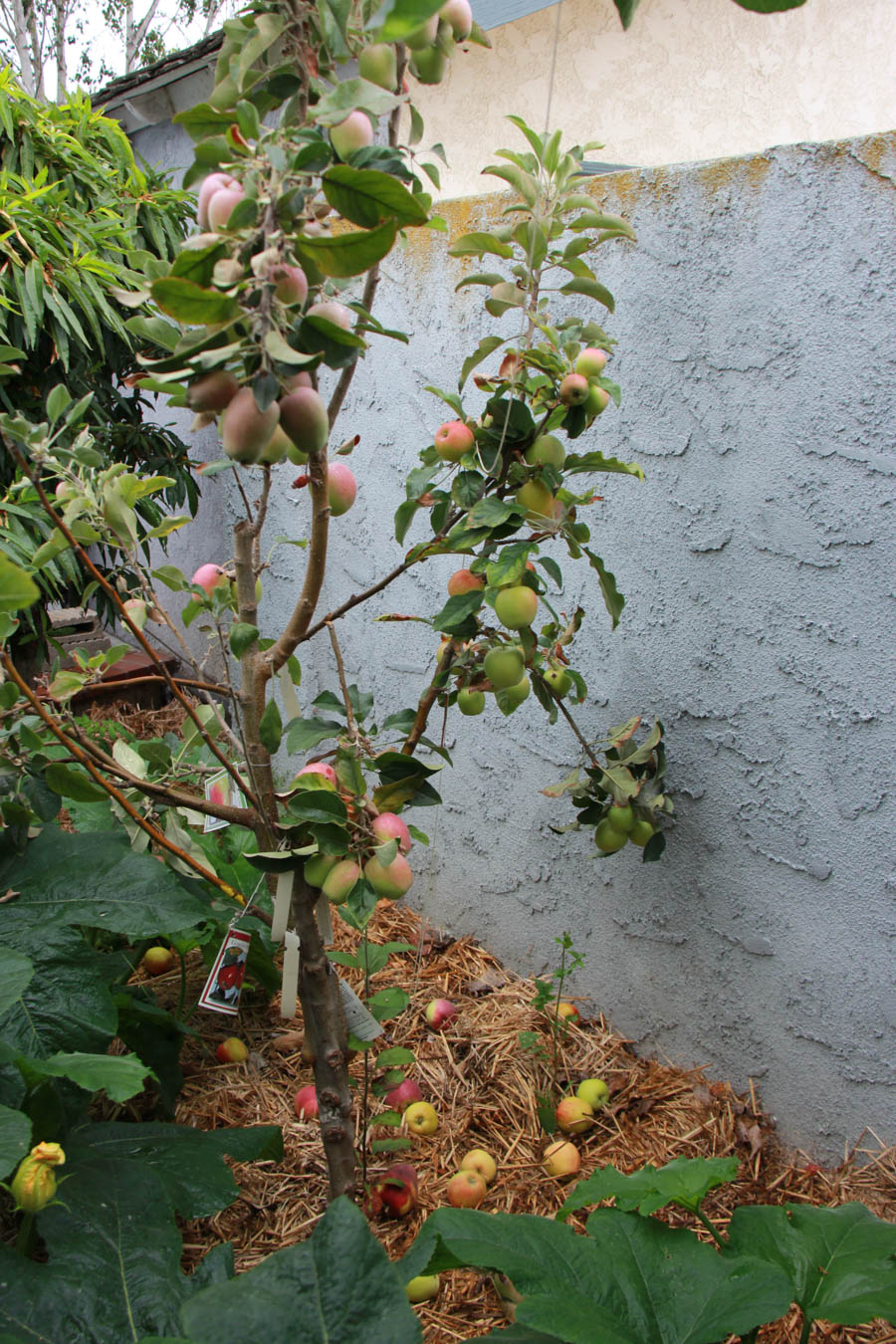
The tree was full this year!

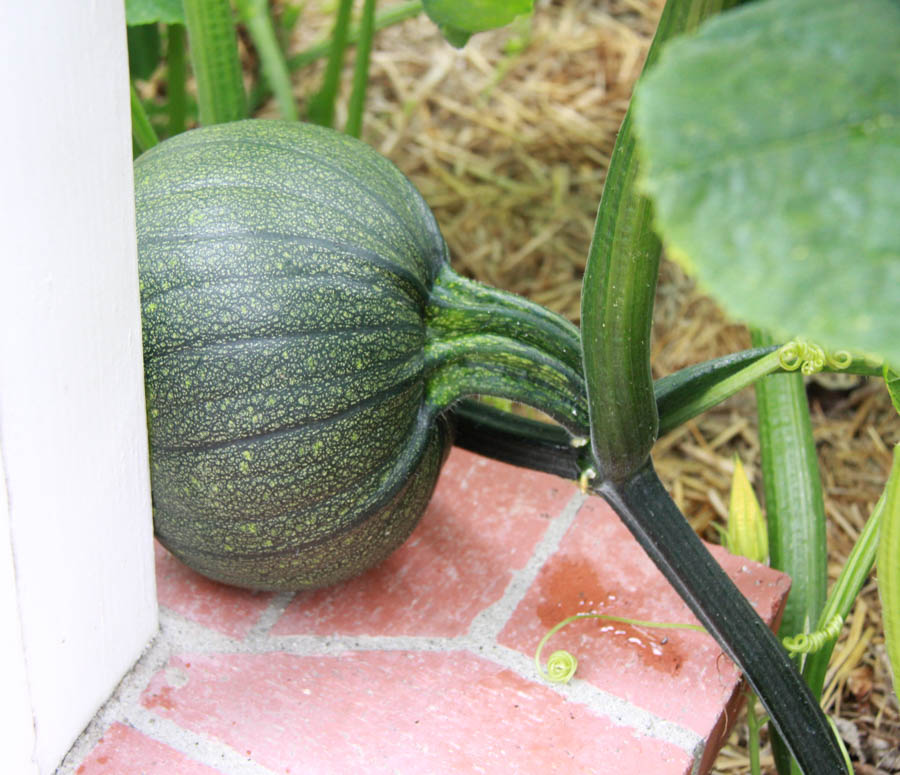
Yes... The pumpkin is hiding from Paul!
Did You Know?
- Pumpkins originated in Central America.
- A pumpkin is a fruit. Most people think of it as a vegetable.
- Pumpkins are 90% water.
- The largest pumpkin ever grown is 2,032 pounds.
- The largest pumpkin pie weighed 3,699 pounds, and is 20 feet in diameter.
- Pumpkins are grown all over the world on six of the seven continents, with Antarctica being the sole exception. They are even grown in Alaska.
- A pumpkin is not a Jack O'Lantern, until it is carved.
- Pumpkins were once recommended as a cure for freckles.
- They were used as a remedy for snake bites.
- Pumpkin seeds help avoid prostate cancer in men.
- Native Americans fed pumpkins to their horses.
- Pumpkin flour can be used in place of wheat flour. It has many health and medicinal benefits.
- Pumpkins are gluten free.
- At the first Thanksgiving feast in 1621, the pilgrims did not serve pumpkin pie, Rather, they made stewed pumpkin.
- Food maufacturers use tan colored pumpkins to make pumpkin puree.
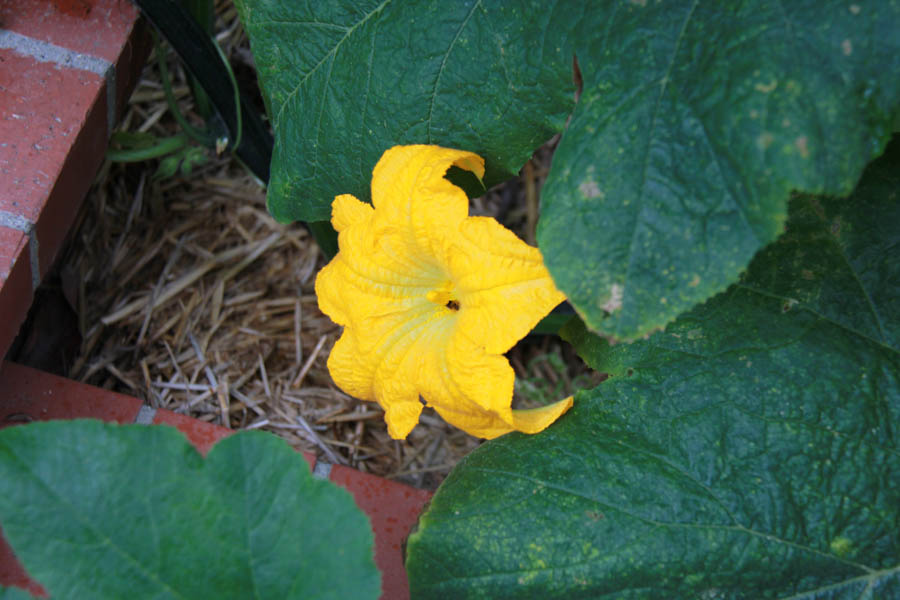 From little blossoms do pumpkins come from!
From little blossoms do pumpkins come from!

He is NOT alone!
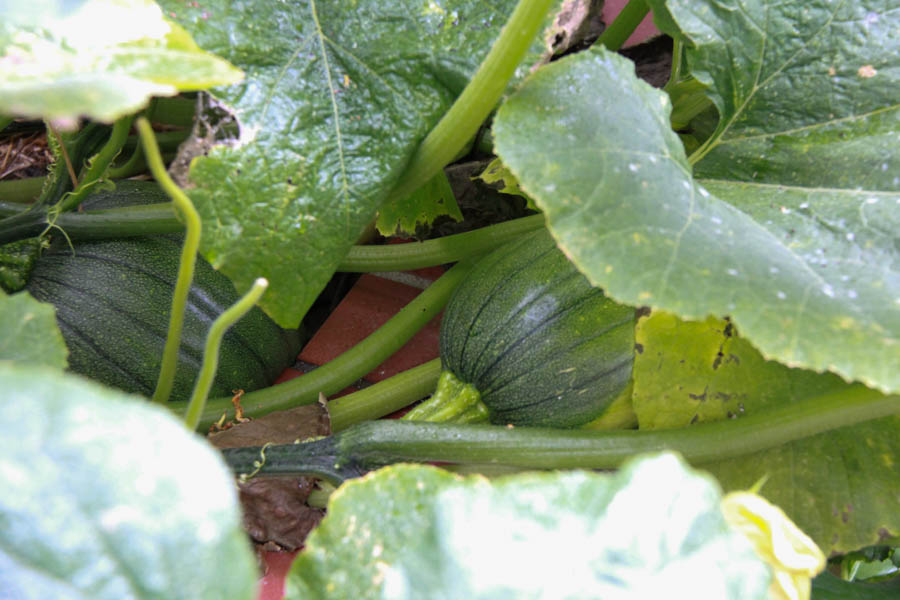
They hide well in the garden


The pumpkin was a baby in April... By May it was beginning to grow!
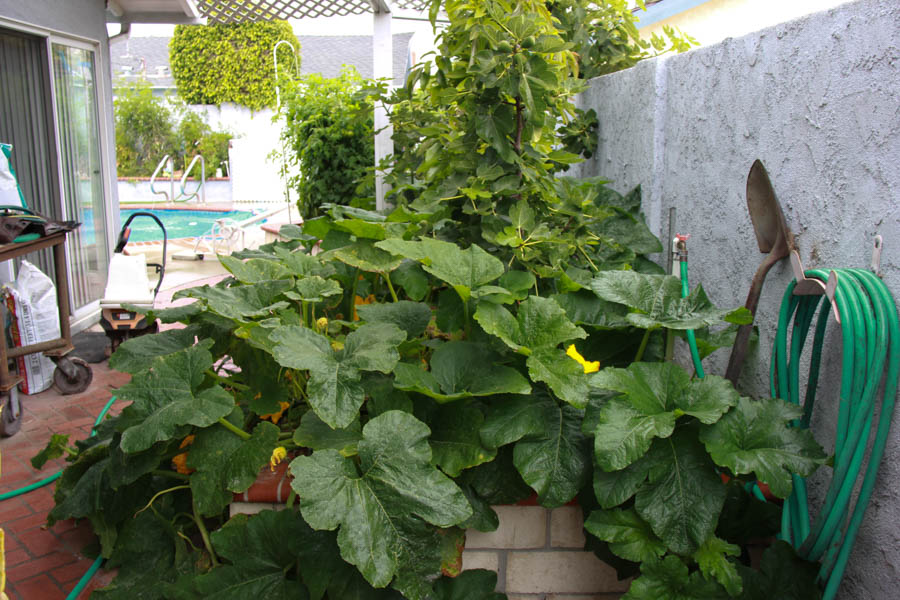
The two pumpkin plants have taken over the garden!

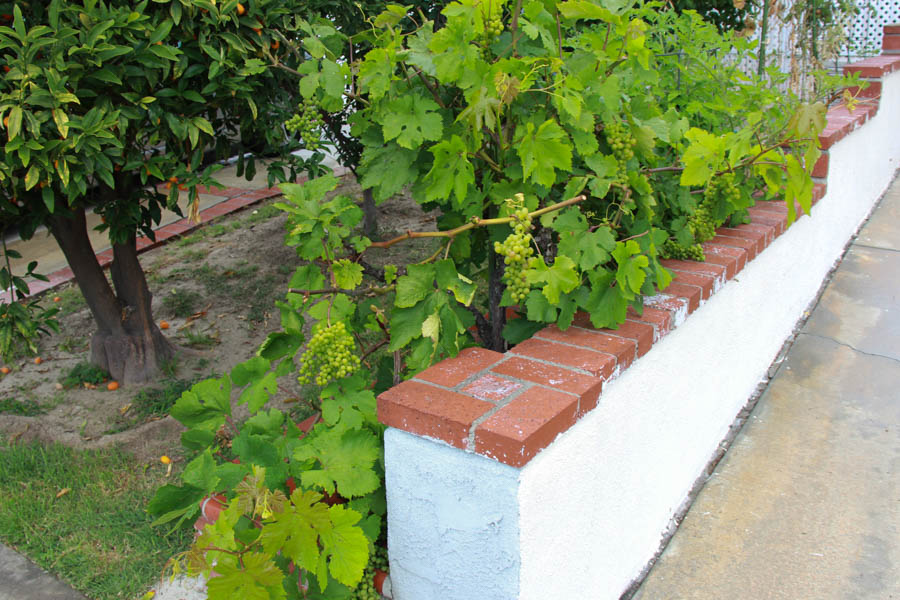
We have grapes down the driveway... Sorry, table grapes only!

Nope! Still a table grape
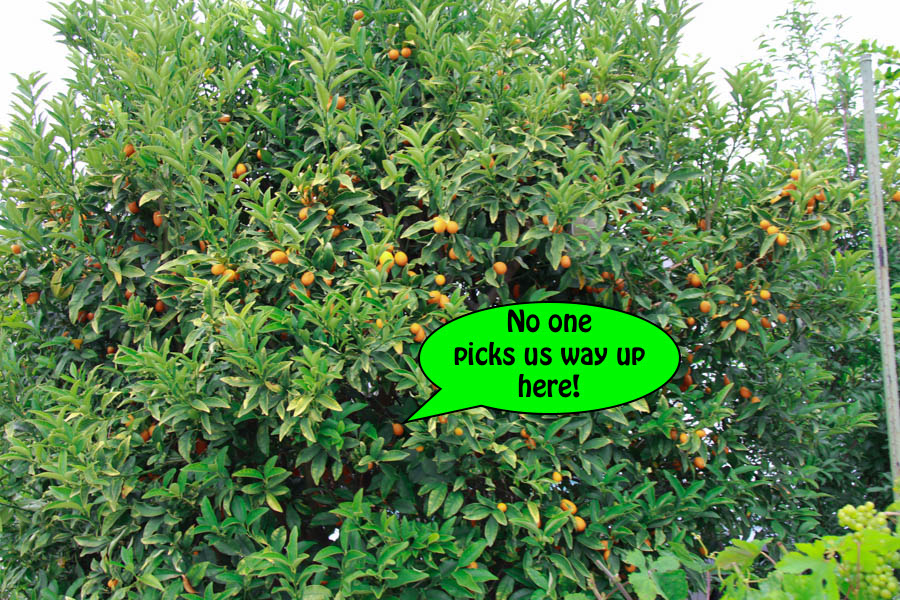
The kumquats are doing just fine!
Did You Know? -
The kumquat is a tiny orange/yellow, football-shaped fruit native to Eastern Asia, and closely related to citrus fruits. (Kumquats were originally considered Citrus, but in 1915 were given their own genus, Fortunella). They are unusual in that the edible skin is sweet and the flesh is quite tart, and the combination leaves a pleasant citrus taste in the mouth.
Kumquats are eaten whole, candied, pickled, and used to make relishes, preserves and marmalades.
There are also hybrids produced with limes, oranges and other citrus fruit, known by names such as limequat, orangequat, citrangequat, etc.
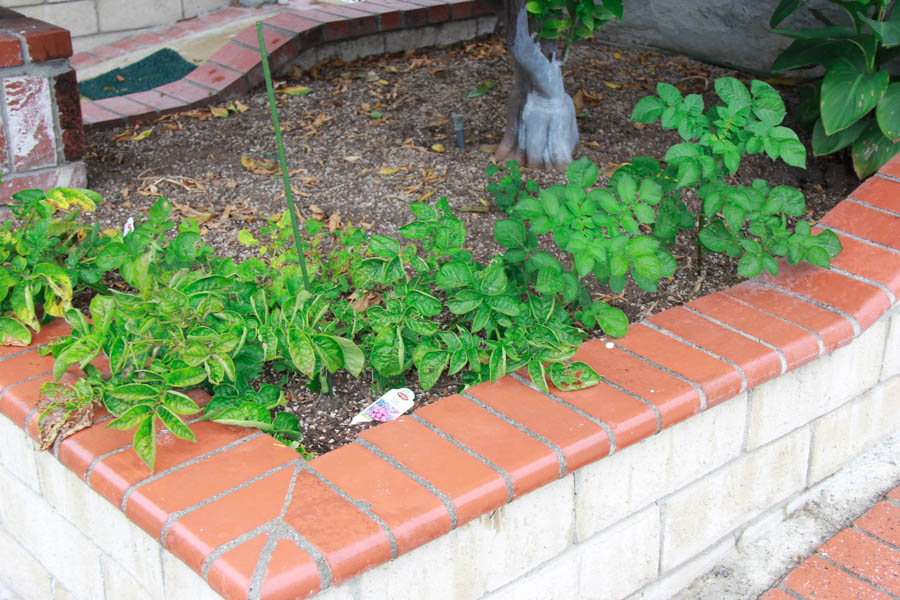
The potatoes are on their way... They are ready after the vine dies and turns brown!

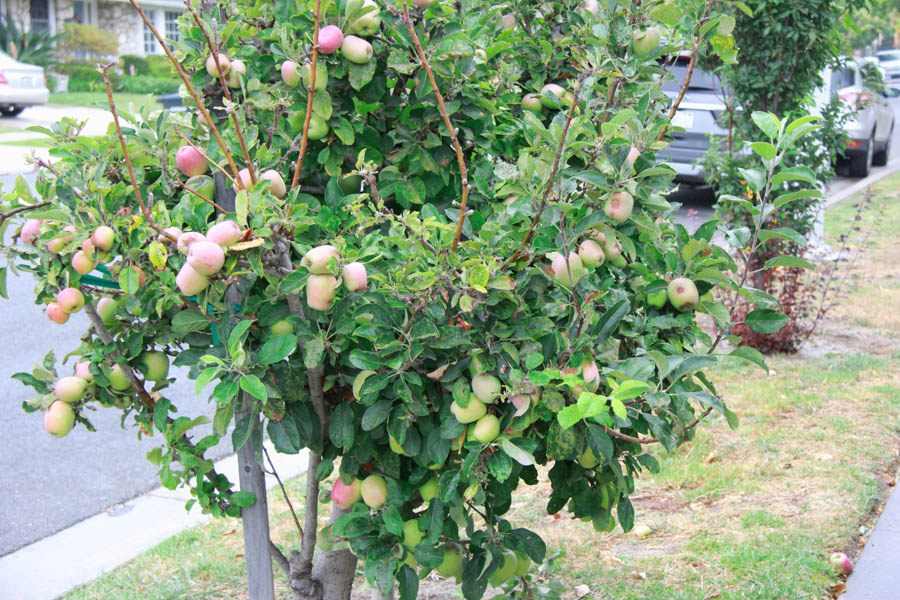
The tree is loaded... I smell apple sauce in our future!
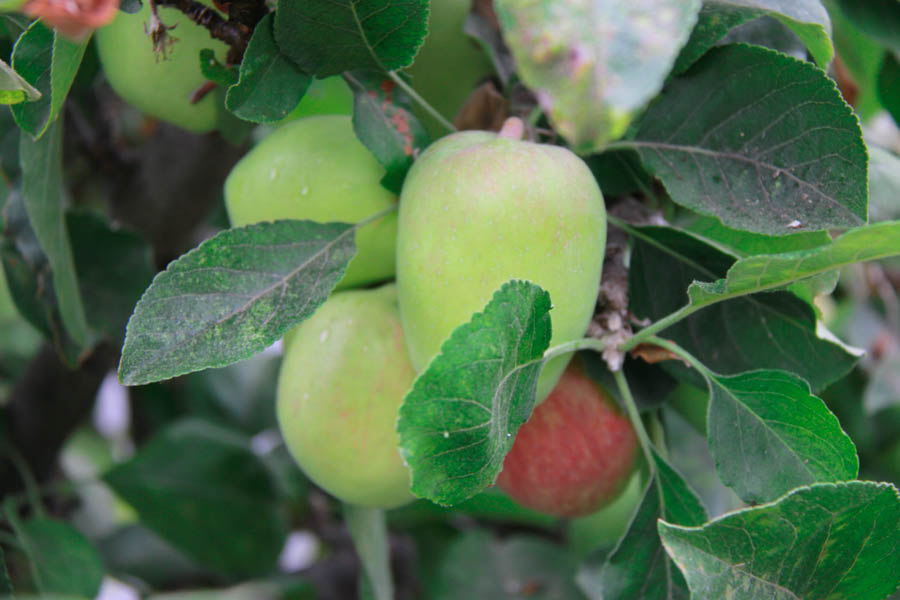
They are just so fresh and crisp they snap when you bite them!
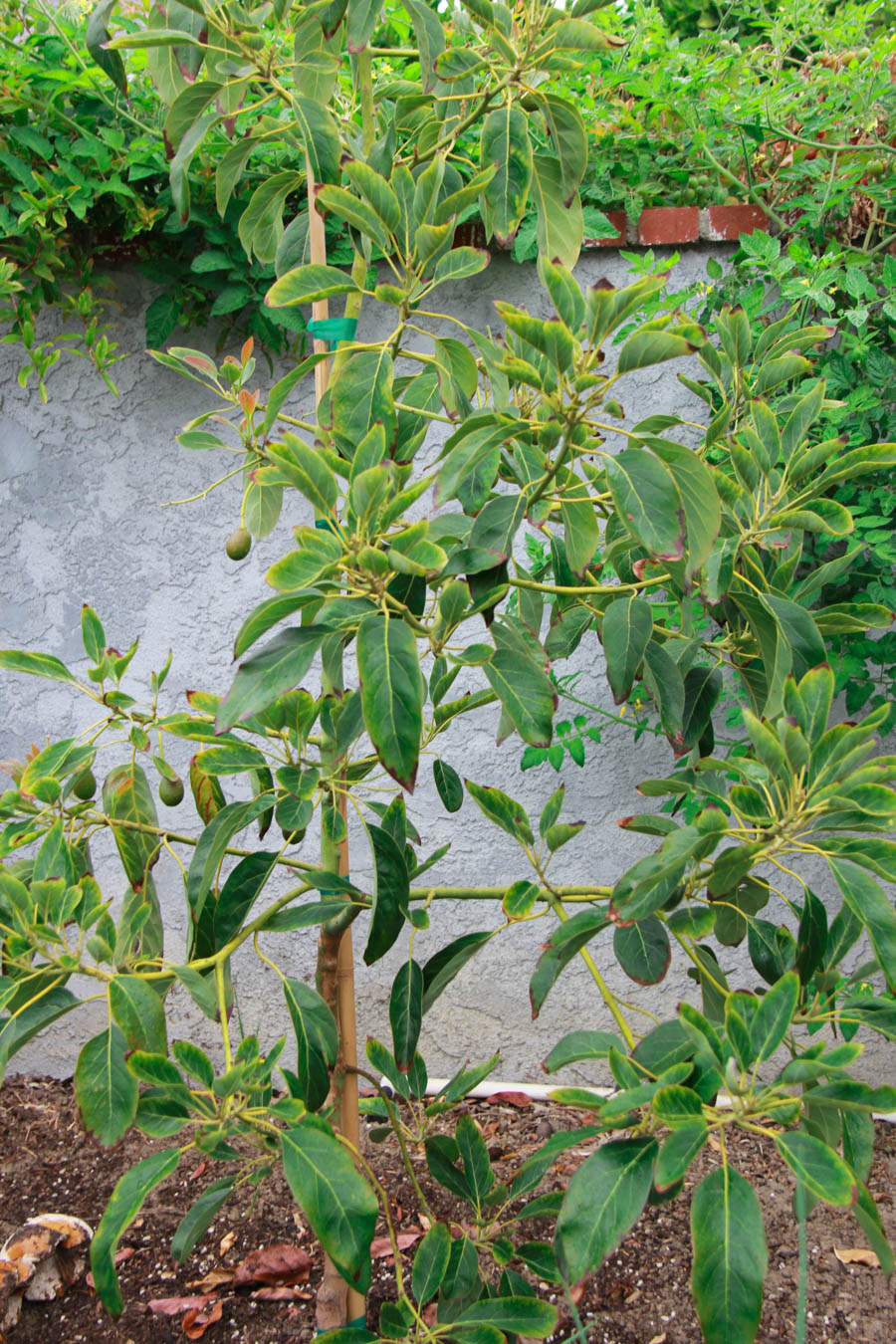
The avocado tree is producing... Yeah!
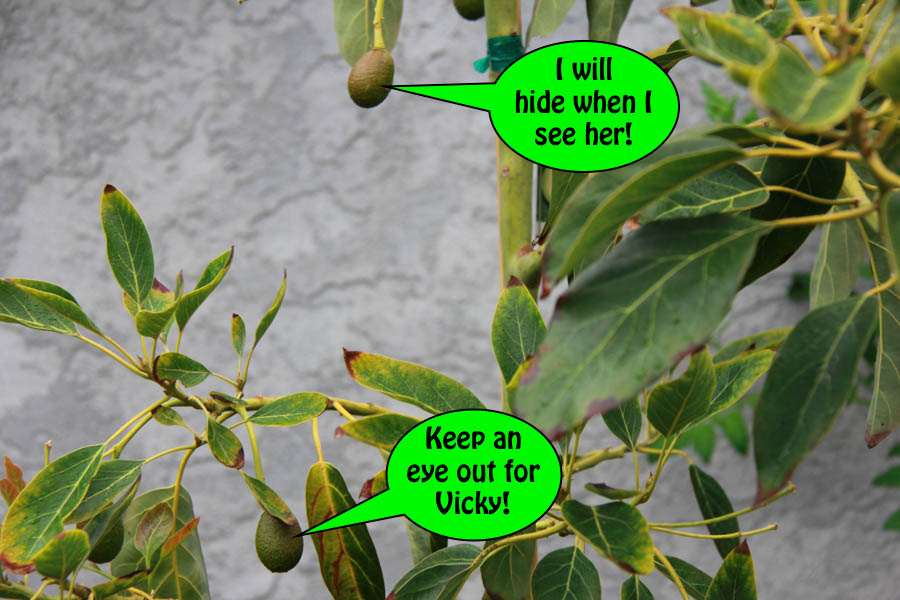
They are on the lookout for our neighbor!
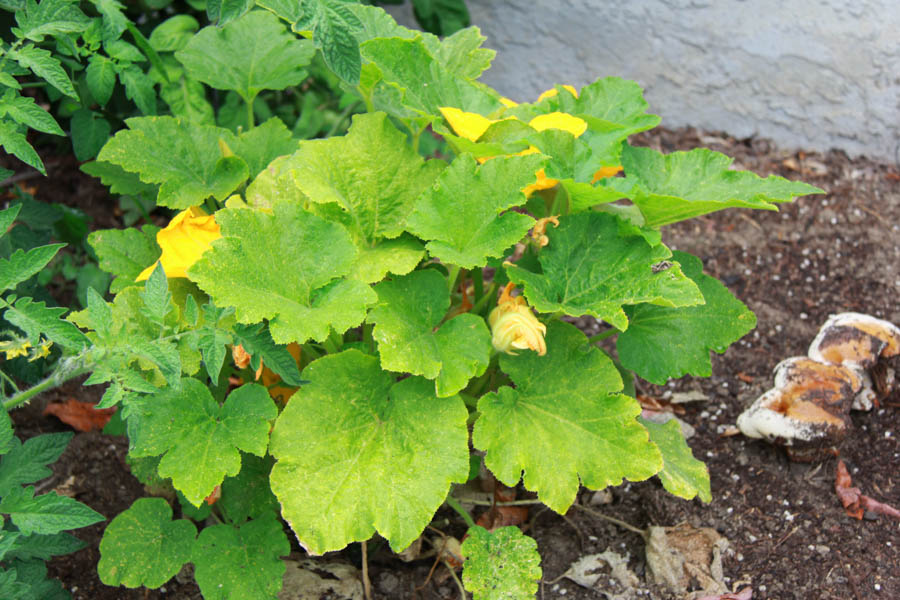
These are pumpkins for Vicky's grandsons!
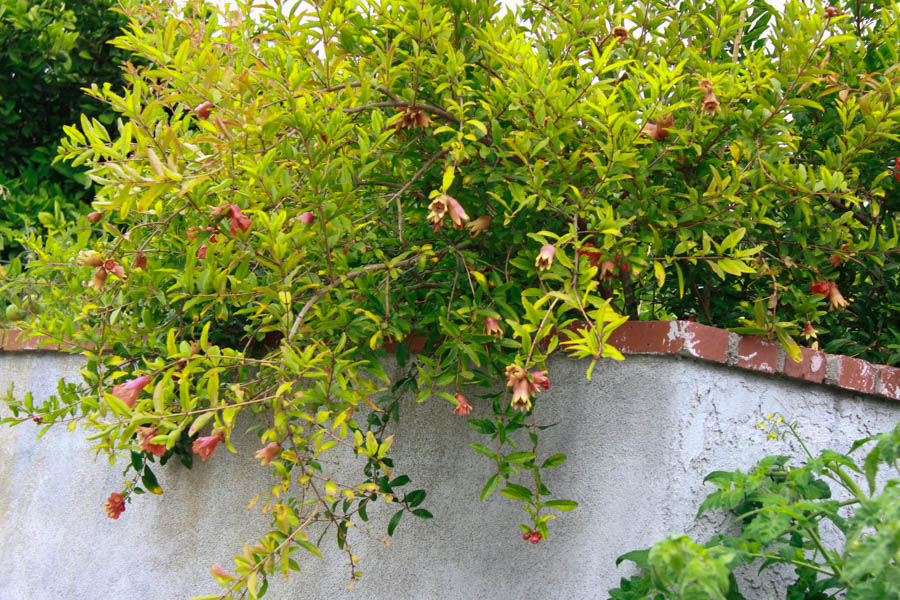
The pomegranates have gone wild again!
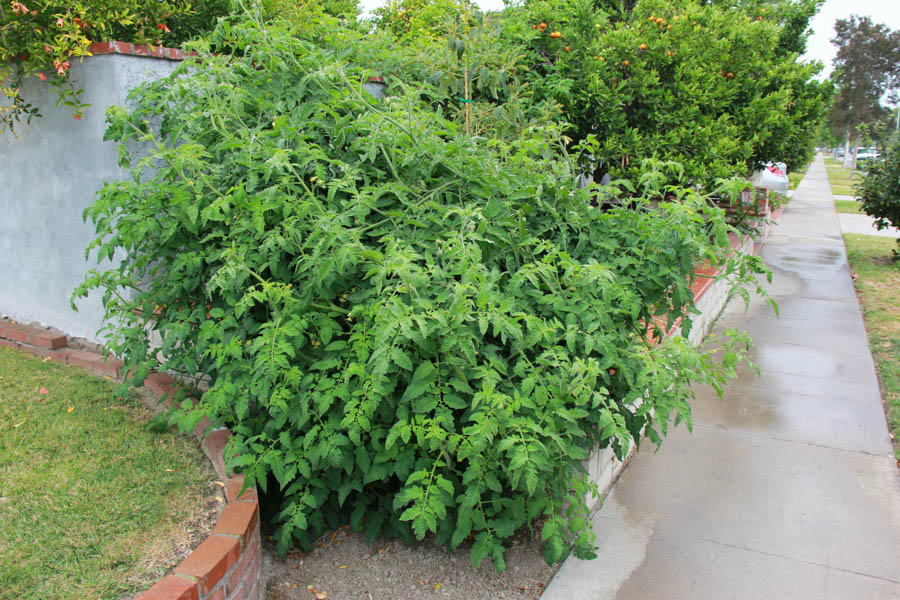
That was a small tomato plant and now it is ginormus!
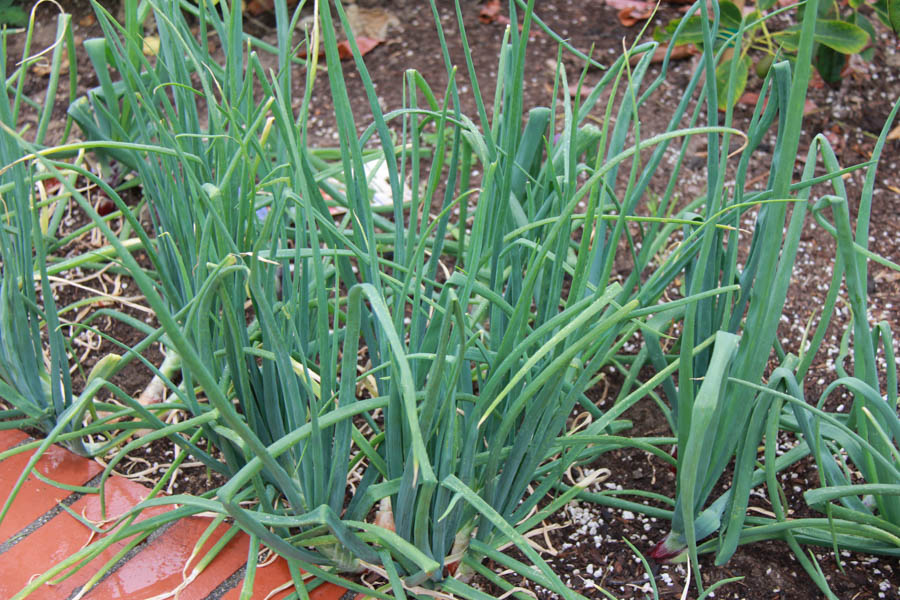
Dutch shallots everywhere...
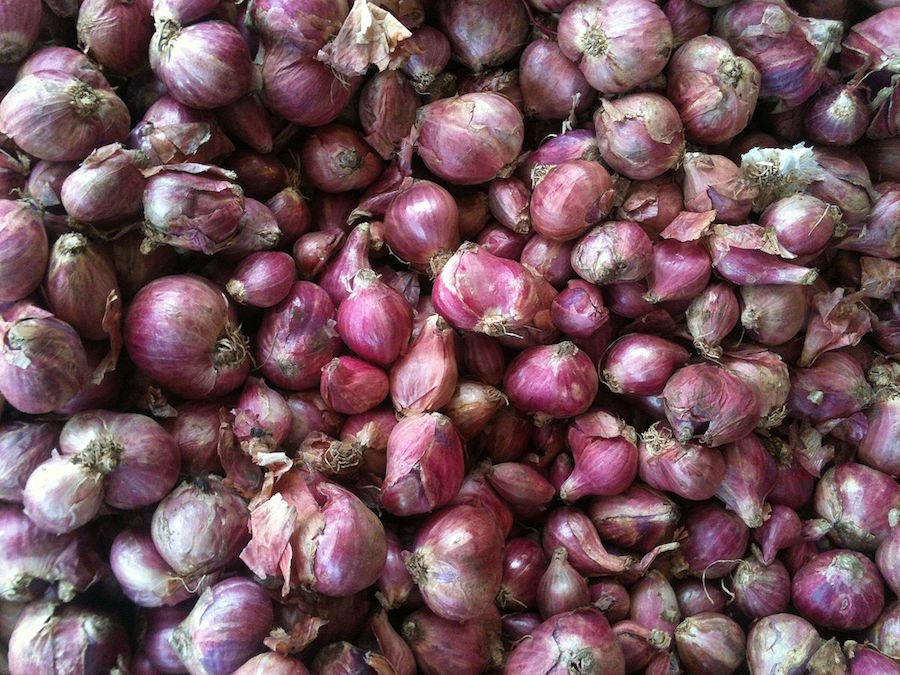
By July/August we will be harvesting this crop
Did You Know? - Cooking ideas. Shallots are a key ingredient in many sauces—beurre blanc, béarnaise sauce, white- and red-wine sauces, and seafood sauces. Unlike onions or garlic, shallots will not make a sauce more pungent but will sweeten the flavor.
Shallots also are added to soups, salads, and sautéed vegetables. Where a recipe calls for a small amount of onions, shallots can be used.
Shallots can be finely sliced and added uncooked to salads.
When cooked, shallots "melt" or dissolve into the pan juices of ragouts or stews and need not be strained or puréed. Shallots will both flavor and thicken a stew.
Whole shallot cloves can be tossed with a little oil and baked at 350°F for about 30 minutes until they are caramelized and then served as a vegetable side dish.
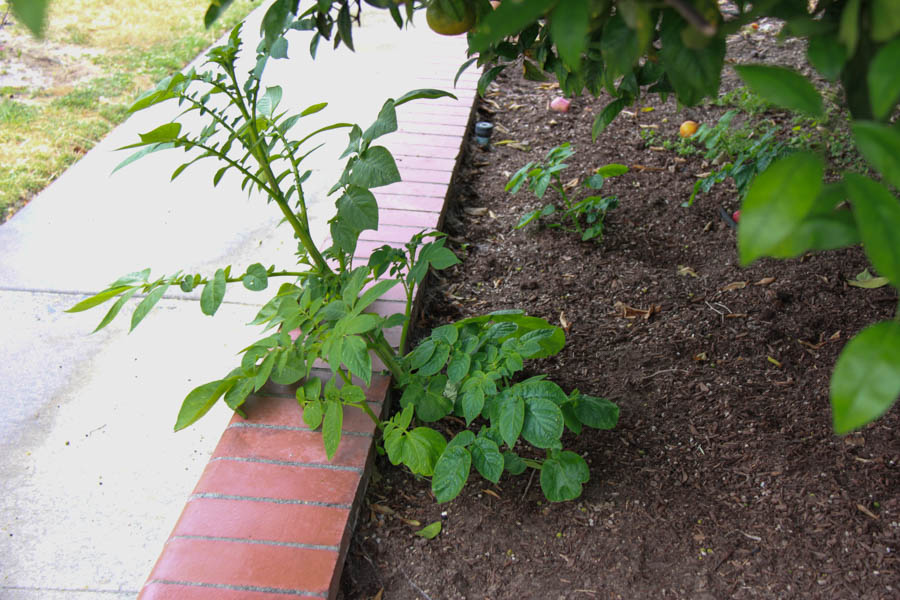
The potato looks great... Can't wait for it to die so we can dig up the roots!

Where men fear to tread!
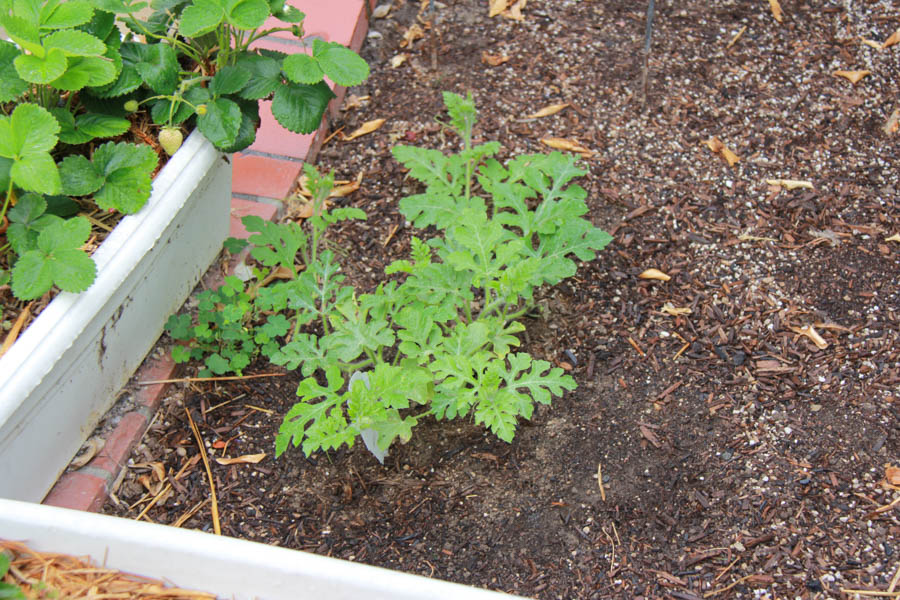
We are going to have watermelon in about 70 days!
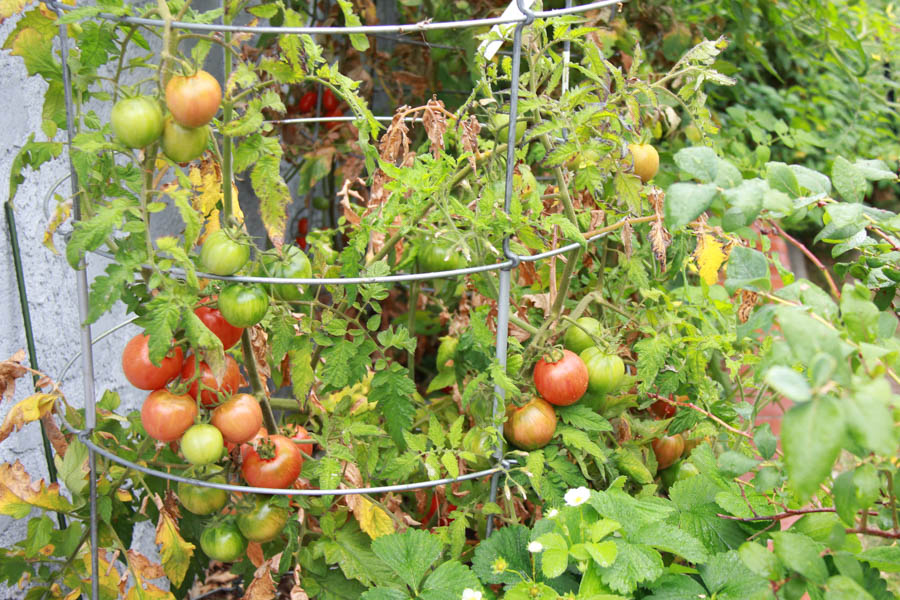
When the tomatoes get red, the plant looses is green... When
the garden is producing it looks so "brown"
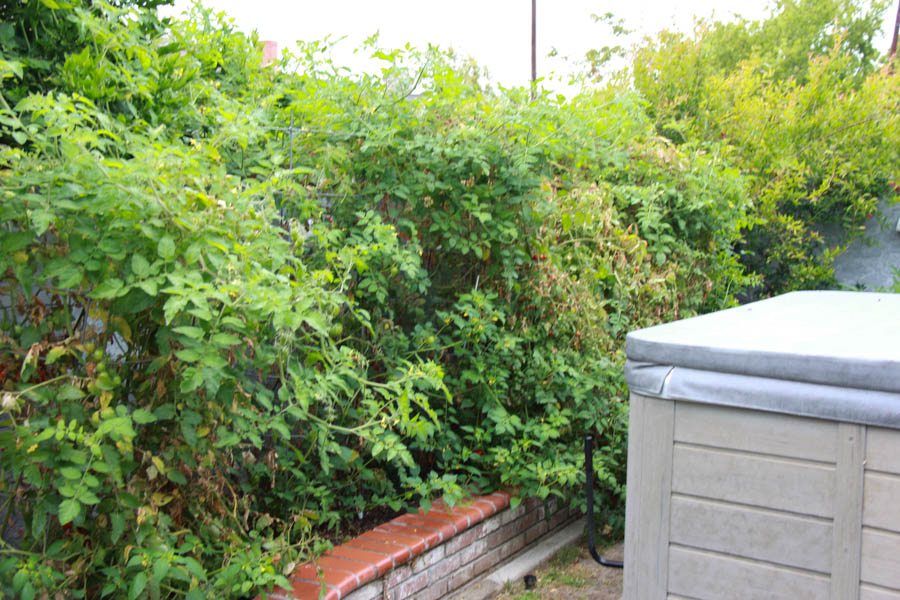
The "tomato from hell" is back again this year...
The volunteer
goes wild and grows over the fence into the citrus trees!
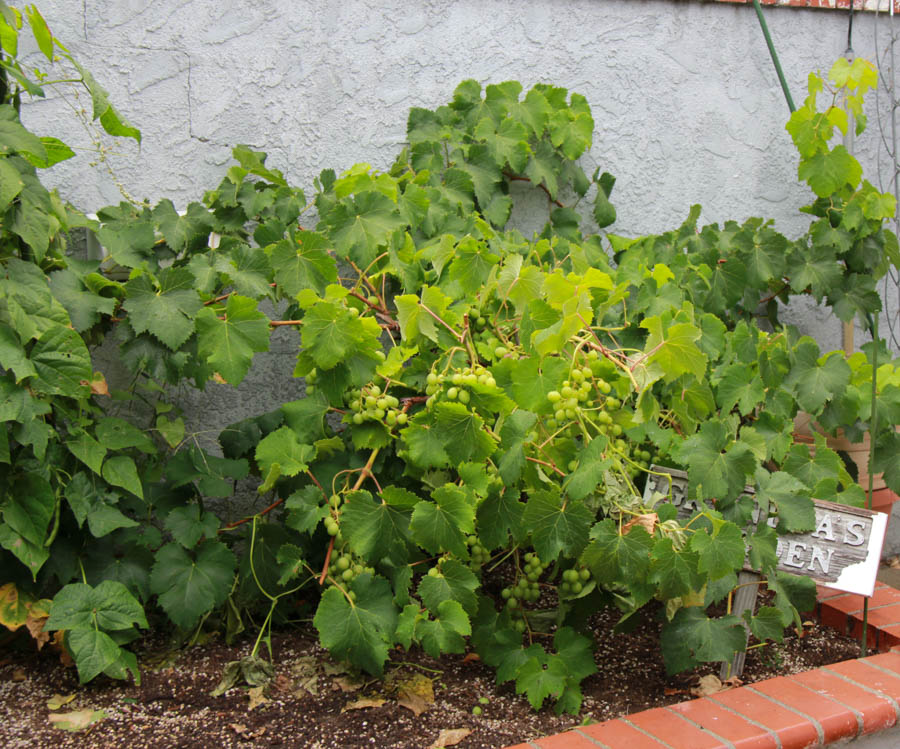
The Japanese grapes are looking fantastic!
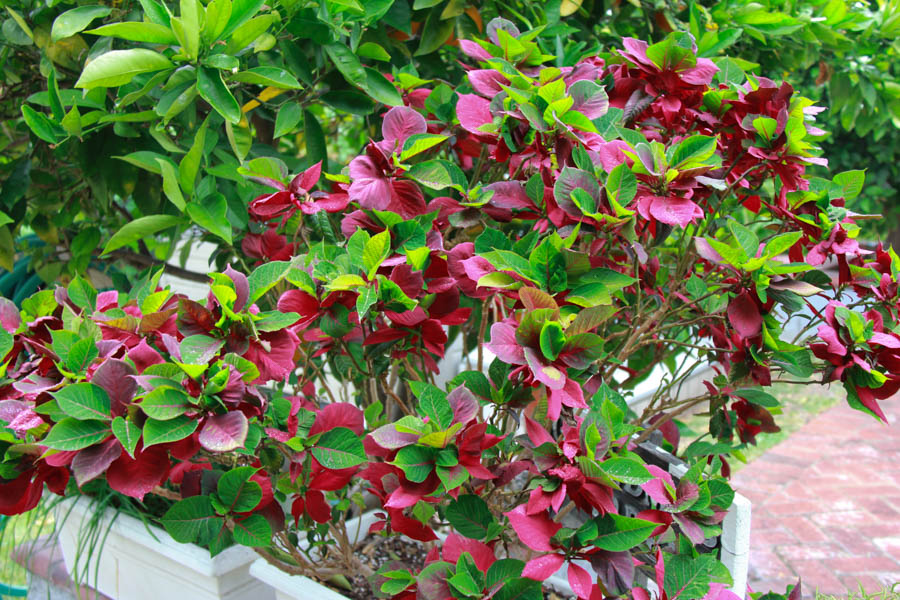
Our "Charlotte Flower" is watching over their garden!
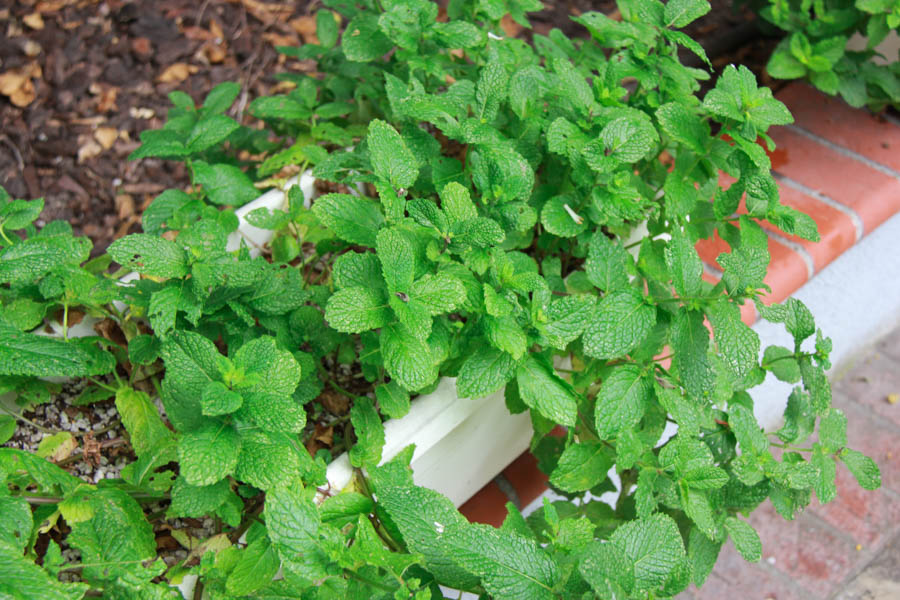
The herb garden keeps up with Sue's cooking...
You can smell the mint as you walk by!

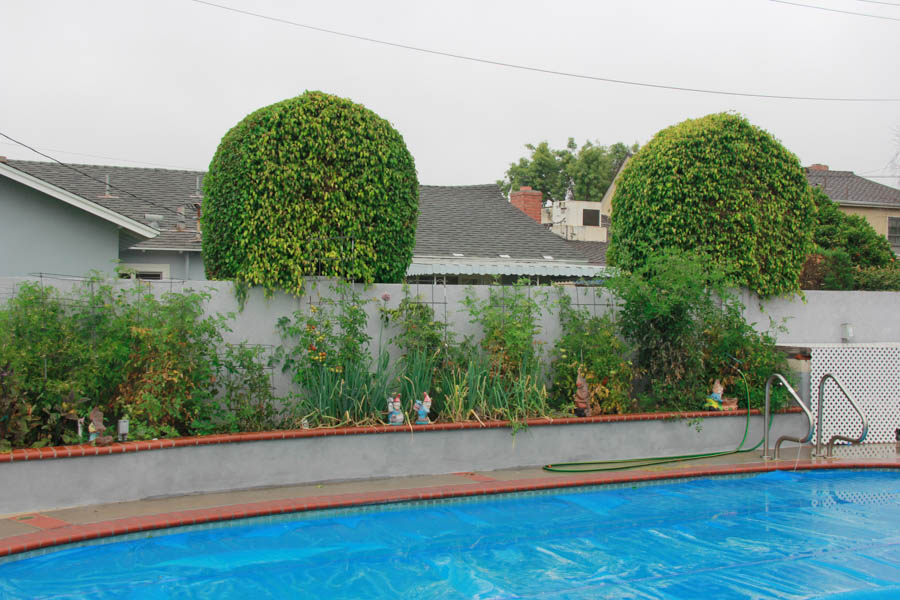
The baby tomatoes line up against the back fence!
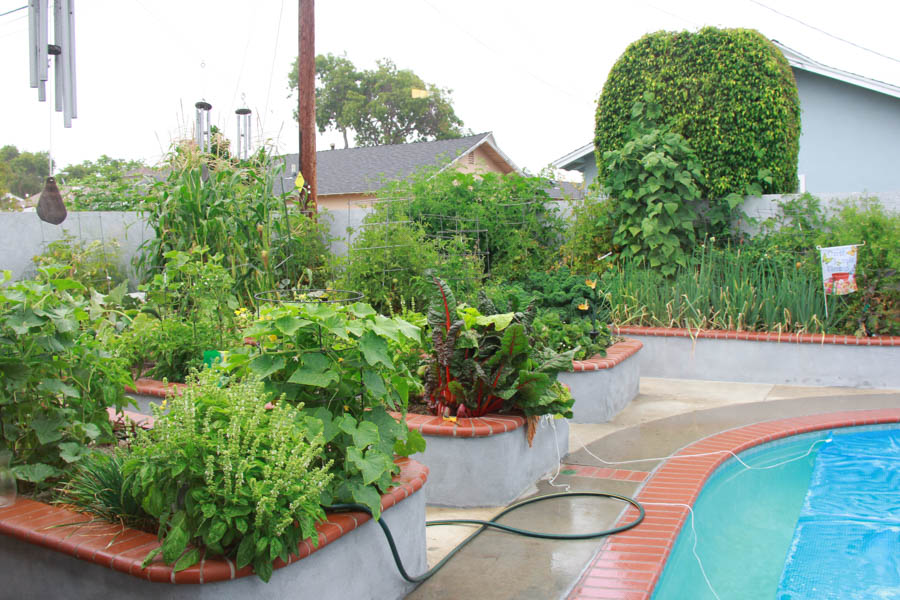
The new flower/vegetable beds are doing their duty well!
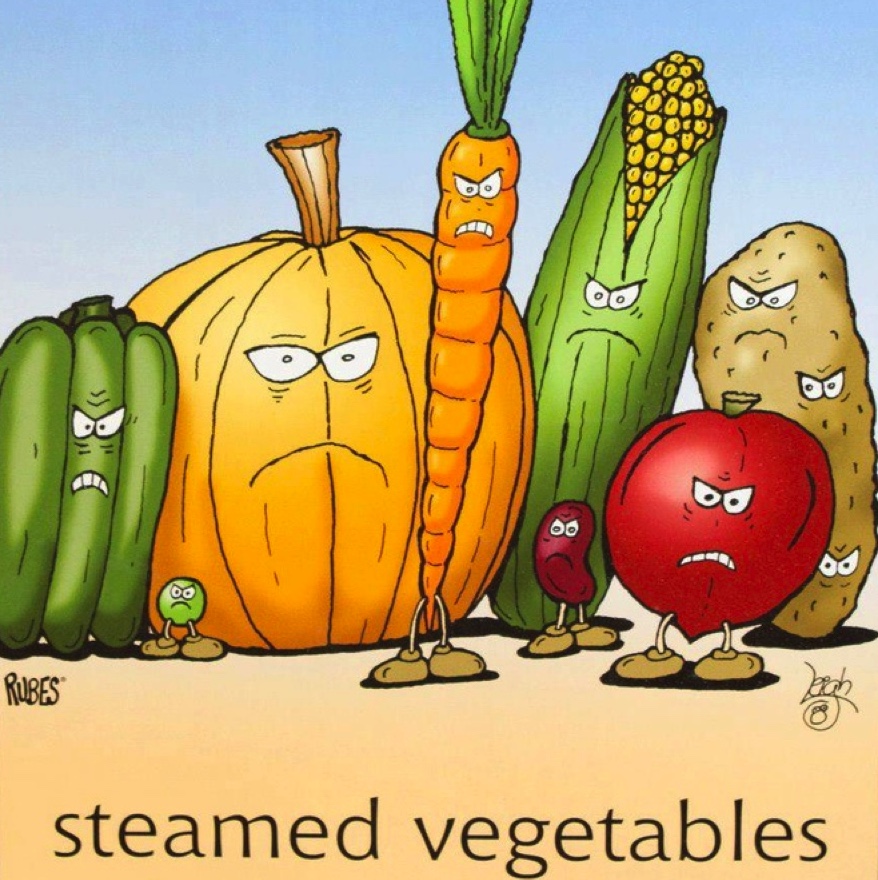
We try and keep our veggies happy!